









































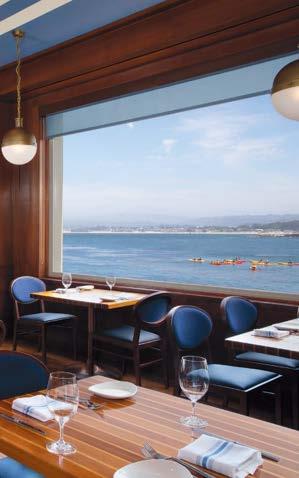
Enjoy selections of sustainable seafood and local fare at Schooners! As proud members of the Seafood Watch Program, we are dedicated to sourcing our products responsibly. Sit back with seasonal offerings the unparalleled vistas of MontereyBay our heated outdoor patio or inside the coastally inspired .

We have a friend who is originally from Iran, where they observe New Years on the first day of spring—this year on March 19. We’ve celebrated with her many times at parties that usually include leaping over bonfires. But the Persian custom I love most involves growing a small dish of wheatgrass or other seeds in anticipation of the New Year.
By the equinox it becomes a 2-inch tall patch of bright green, which is called sabzeh and used to decorate the table or give to friends. It symbolizes the greening and rebirth of the earth after the bleakness of winter.
Nothing makes more sense to me than taking our cues from Mother Nature and celebrating the new year as spring begins. Even though we’ve had a mild, sunny winter so far in the Monterey Bay area, spring always brings fresh energy to tackle new projects, learn additional skills or make life changes.
In our culture New Year’s resolutions are made on January 1, but I like to make mine when spring begins, which also happens to be when I celebrate my birthday! The earth warms, days grow longer, plants switch into high gear, flowers bloom and it’s time to begin a new turn around the sun.
Our seasonally-inspired magazine’s first issue of 2020 features Jamie Collins’ story about local growers of microgreens and many ideas on how to use them for taste and nutrition. As it turns out, photographer Patrick Tregenza’s delicious photos of microgreens look a lot like the bowls of wheatgrass grown for the Persian New Year.
Elsewhere in the spring issue, Mark C. Anderson brings us up to speed on his hometown, Seaside, where an explosion of youth-driven food and drink businesses is transforming the landscape and making it a place well worth checking out.
Kathryn McKenzie introduces us to third-generation duck egg rancher Marc Metzer, who is preparing his family’s business to continue well into the future. We preview a new cookbook by Jordan Champagne, who readers will recognize from her Preservationist articles in Edible Monterey Bay, as well as her Pacific Grove business, Happy Girl Kitchen.
We have a trio of articles to help you learn new culinary skills for spring. Chef John Cox explains everything you wanted to know about onions and the role they should play in every kitchen. Chef Martin Hoellrigl offers instruction on how to cure salmon at home—a technique which is surprisingly easy and just in time for salmon season!
Contributors Jessica Tunis and Amber Turpin encourage us to get creative with a universal green sauce that can be adapted to suit whatever style of global cuisine you are planning to put on the table.
We hope you’ll enjoy this fresh spring issue as much as all of us enjoyed preparing it. As always, our deepest appreciation goes to our dear advertisers who continue to champion and support Edible Monterey Bay. Happy spring, and have an amazing new year!
EDITOR AND PUBLISHER
Deborah Luhrman deborah@ediblemontereybay.com 831.600.8281

FOUNDERS Sarah Wood and Rob Fisher
COPY EDITOR Doresa Banning
LAYOUT & DESIGN Matthew Freeman and Tina Bossy-Freeman
AD DESIGNERS Bigfish Smallpond Design Jane Bolling Design • Zephyr Pfotenhauer Melissa Thoeny Designs
CONTRIBUTORS
Mark C. Anderson • Elizabeth Birnbaum •
Jamie Collins • John Cox • Diane Gsell • Martin Hoellrigl • Jules Holdsworth • Coline LeConte Michelle Magdalena • Kathryn McKenzie • Laura Ness • Zephyr Pfotenhauer • Chris Schmauch • Erin Scott • Patrick Tregenza • Jessica Tunis • Amber Turpin
ADVERTISING SALES ads@ediblemontereybay.com • 831.600.8281 Shelby Lambert shelby@ediblemontereybay.com Kate Robbins kate@ediblemontereybay.com Aga Simpson aga@ediblemontereybay.com
DISTRIBUTION MANAGER Mick Freeman • 831.419.2975
CONTACT US:
Edible Monterey Bay P.O. Box 487 Santa Cruz, CA 95061 ediblemontereybay.com 831.600.8281 info@ediblemontereybay.com
Edible Monterey Bay is published quarterly. All rights reserved. No part of this publication may be used without written permission of the publisher. Subscriptions are $28 per year at ediblemontereybay.com. Every effort is made to avoid errors, misspellings and omissions. If, however, an error comes to your attention, please accept our apologies and notify us. We also welcome letters to the above address. Thank you.
Deborah Luhrman Publisher













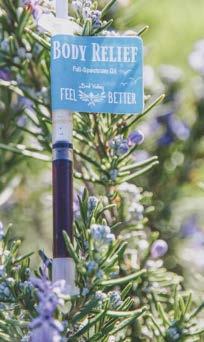
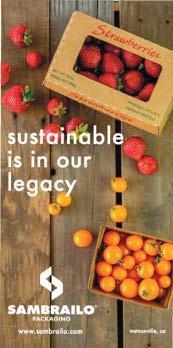
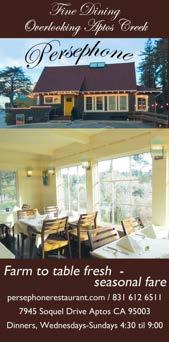




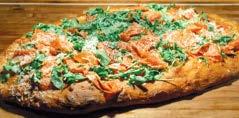

Duck, duck, goose . The children’s game comes to mind while touring the Gonzales ranch that is home to thousands of waterfowl and other birds. It also is the birthplace of the Metzer Farms hatchery and its recent spinoff, Olinday Farms. Ducks shuffle around their covered pens and eye visitors suspiciously, letting out low quacks of alarm.
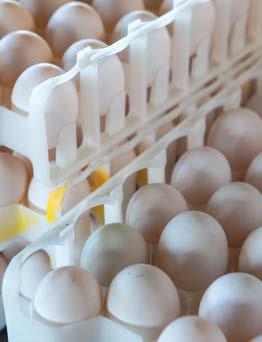



Their attitude does not faze Olinday president Marc Metzer as he walks through the ranch, pointing out some of the more unusual breeds, like the Rouen, a meat duck that is twice the size of mallards, and the white golden, developed by his father to produce lots and lots of eggs. It’s the white golden and another breed, the golden 300, that are Olinday’s premier fresh egg layers.
The younger Metzer is now setting out to make Olinday a household name—or if not quite that, then at least a familiar and trusted name in culinary circles.
Many local chefs are already on board, like Todd Fisher, who uses Olinday eggs in his offerings at Carmel Valley’s Folktale Winery and Seventh & Dolores steakhouse in Carmel. Chef Brandon Miller also uses them at Il Grillo in Carmel, as does Soerke Peters
at Mezzaluna in Pacific Grove. “It’s a unique item that chefs at white tablecloth restaurants really like,” says Metzer.
Metzer, 33, grew up along with his family’s business on the east side of Gonzales in south Monterey County. Metzer Farms, founded in 1972 by Marc’s grandfather Olin and now run by Marc’s father John, is a top U.S. hatchery, supplying live ducklings and chicks to farms, and really, to anyone who wants a duck (minimum order two).
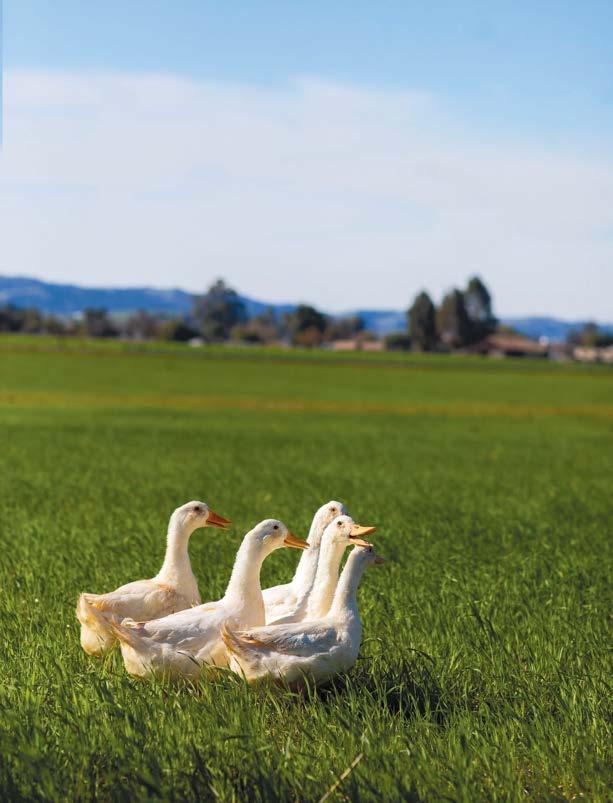
From the beginning, though, the ranch also sold duck eggs on the side—brined eggs and balut for Asian cuisine, and some fresh eggs as well. Several years ago, the Metzers realized that requests for fresh eggs were on the upswing and Olinday was founded to keep up with burgeoning demand from chefs and consumers.
Olinday’s Marc Metzer (top left on previous page) and his white golden ducks, which produce up to 30,000 eggs a week.
Some 9,000 egg producing ducks are housed at the Olinday ranch in Hollister.

Ducks and duck eggs are all the rage right now, a trend helped along via eco blogs and Instagram. Organic farmers have discovered the birds to be an easy and sustainable way to control bugs and slugs, which ducks gobble up avidly as they forage. Ducks are less destructive to gardens than chickens tend to be, and they also live longer, are subject to fewer diseases and parasites, and produce a higher quantity of eggs.
Followers of the paleo diet love the higher fat and nutrient content of duck eggs, and people who are allergic to chicken eggs like having duck eggs as an option. Home cooks who take their craft seriously enjoy the opportunity to experiment with the creamy, rich flavors that duck eggs lend to dishes that range from frittatas to crème brûlées. Duck eggs are slightly more expensive than chicken eggs—currently the supermarket price runs about $6.99 for a package of six—but you also use fewer eggs per recipe, with two duck eggs substituting for three chicken eggs.
That’s because duck eggs are about a halfounce larger and due to their thicker shells, have a longer shelf life of up to 10 weeks. Duck eggs also have a slightly higher yolk-towhite ratio and the whites are thicker and less watery, and have almost twice the protein of chicken eggs, in addition to generous helpings of vitamin A, choline, iron and folate.
Right now, Metzer and his crew are playing a guessing game, trying to determine where sales will be in six months so they can make sure to meet the demand. Currently, Olinday produces 25,000 to 30,000 eggs a week for distribution to numerous restaurants as well as 70 grocery stores throughout Northern California, including Andronico’s in Monterey, Staff of Life in Santa Cruz and Hollister Super locations in San Benito County. Plans call for expanding to markets in Southern California.
You could say Olinday has a lot of lucky ducks. Currently, 9,000 egg producers are housed at the Olinday ranch in Hollister, where they live in large open-sided barns that protect them from weather and predators, and Olinday staff takes pains to keep the birds in good spirits.
“Ducks need to be content and happy for good egg production,” says Metzer. “They need a stress-free life. So they have feed and water any time they want it, and our employees are trained not to frighten or spook them in any way.”
The ducks at the Hollister facility get conventional feed, but Olinday will soon have a flock in Gonzales that will be fed an organic mix and will be able to forage in a grassy pasture. Metzer is putting the finishing touches on a duck pen that can be moved from place to place, constructed from a carport kit and “pieces from Amazon,” and will have solar panels to provide lighting. That way, Olinday will be able to offer organic eggs to consumers in the near future.
Next challenge: convincing packaging manufacturers to produce sixpack duck egg cartons made from paper fiber, a more sustainable choice than the current polystyrene type. “People are asking for that,” Metzer says.
Kathryn McKenzie, who grew up in Santa Cruz and now lives on a Christmas tree farm in North Monterey County, writes about sustainable living, home design and health for numerous publications and websites.
Olinday Farms olindayfarms.com 831.679.3179





Cookbooks are often just simple collections of recipes. But a brand-new book on fruit preserving aims to be much more than that—it’s a toolbox for cooks who love to tinker in creative ways with jams, jellies, syrups and butters.
That was the compelling concept which led to It Starts With Fruit: Simple Techniques and Delicious Recipes for Jams, Marmalades, and Preserves (Chronicle Books, $29.95), the debut cookbook of Jordan Champagne, co-founder of Happy Girl Kitchen in Pacific Grove. It Starts With Fruit will be released in May.
The 285-page book is organized into sections that reflect the way Champagne teaches her workshops, with tips, tricks and troubleshooting all included, as well as an entire chapter on how to use preserves to make cobblers, cookies and pastries. “Once you understand the techniques, you can have a whole lot of fun coming up with your own combinations,” says Champagne.
In her book, Champagne advocated for images featuring Central Coast farms, leading to photo shoots at Apple Pie Ranch in Big Sur and Live Earth Farm in Corralitos that produced dreamy scenes of ripe fruit and lovely local places.
Champagne and husband Todd began selling their own line of preserves and started Happy Girl Kitchen in 2002, as both a café dedicated to organic, sustainable food and as a space for teaching others to preserve fruits and vegetables. Along the way, Happy Girl has created a community of people dedicated to making the most of this area’s bounty of fruits and vegetables. She has also been a stalwart supporter of Edible Monterey Bay magazine from its start, contributing her column “The Preservationist” several times a year.
Champagne has long been on a mission to bring the old-fashioned arts of canning and preserving back into public consciousness. Her sold-out workshops here and in Oakland show there’s a hunger for knowledge about preserving, as people seek a new self-sufficiency and try to stem the tide of food waste.
The Central Coast environment is a far cry from the small farm in Norway where the couple first learned how to save and keep food, a necessity in a northern country where the summer growing season is short and the winter is long.
Jordan remembers picking “beautiful, pristine strawberries” and learning how to make jam from them, using equal parts white sugar and fruit. She recalls being somewhat offended by the amount of sugar she had to use in the jam and vowed to find a better method, “and I never gave up the challenge.”
That led to her lifelong fascination with fine preserving and her
dedication to getting it just right, no matter what the fruit or the fruit combination. True to her original passion, she offers recipes in the book that scale back sugar while pumping up the flavor.
One thing Champagne has become known for—and what she emphasizes in her workshops—is the unique fruit and flavor pairings in her preserves, such as apricot chili jam and Meyer lemon marmalade with ginger. “You can mix and match—once you understand the techniques, you’re golden,” says Champagne.
The book also relates the many different ways in which fruit can be preserved—everything from sauces, butters, syrups and shrubs to dried and candied fruit.
Although jam making is often characterized as being messy, difficult and complicated, Champagne says it’s really just a five-step process, which is shown in text as well as in photos in her book.
Most importantly, she says, is getting to know fruit itself and the “strengths and weaknesses” of each variety. Apples have characteristics unto themselves, and they can’t be prepared the same way as plums or strawberries. Knowing the intrinsic qualities of the fruit, Champagne says, is the key to successful preserves. She also sprinkles in the history of various fruits, traditional uses and her own stories and memories of fruit and preserving.
Champagne said she first started thinking about writing a book eight years ago, but didn’t put all the pieces together until she injured her knee several years ago. Forced to stay still to heal, she turned her unspent physical energy toward the mental toil of her book.
“It was on the back burner, and I decided, ‘I have time now, I need to move it to the front burner,’” she says. She finished writing her draft and a book proposal, found an agent and moved forward. It Starts With Fruit also is the beginning of what Champagne hopes will be a fourbook series, since her vision turned out to be too much for just one volume.
Her book tour will start this summer and will include a number of local book signings as well as East and West Coast events. More information will be available as dates are finalized; check the Happy Girl website for updates.
It Starts With Fruit can be pre-ordered through happygirlkitchen. com as well as from Chronicle Books and from local and online booksellers.
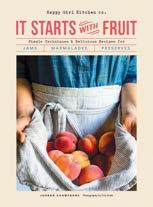
She recalls being somewhat offended by the amount of sugar she had to use in the jam and vowed to find a better method.

Pink grapefruit marmalade is for real marmalade lovers. It has such a strong bitter and tart flavor that the intensity is not for every palate. But nothing compares to a thick piece of toasted bread with a thick spread of grapefruit marmalade and some really good black tea. The grapefruit peels get completely transparent and the color becomes a warming blush glow. Any good-flavored, juicy grapefruit is good for this marmalade and if the pith is very thick, simply remove it before cooking down. Pucker up!
2 pounds (910 grams) grapefruits
1 pound (455 grams) lemons
6 cups (1.2 kilograms) organic cane sugar
8 fresh sage leaves
When preparing the grapefruits for this marmalade, I include all of the rinds. They become translucent as they cook down, and in a grapefruit marmalade, one expects their strong bitter flavor, so I do not eliminate any of them. I also include all of the rind from the lemons.
Prepare the grapefruits and lemons by washing them and removing the ends. Slice the fruit in half lengthwise and then into quarters. If the grapefruit quarters are quite large, you can cut them into eighths before slicing them crosswise. Slice down the center of the fruit, remove the extra membrane and the seeds, and reserve. Next, slice the wedges crosswise, making tiny triangle shapes. Add the fruit to a large pot.
Take all of the seeds and membranes and place in a cloth bag. Close the cloth with string and make sure it is tied very well—you don’t want it to come open while you’re cooking! Add the pectin bag to the pot with the fruit and just barely cover with water (about 6 cups or 1.4 liters). Cover the pot and put it on the stove over medium-high heat. Bring the contents to a boil and then simmer for about 1 hour until the peels are completely tender and the liquid is viscous. Remove from the heat and leave the pot,
covered, overnight or up to 24 hours in a spot that will not exceed 80° F [27° C]. Most countertops are fine.
Put five plates in your freezer so they are ready for your gel test at the end. Prepare eight 8 ounce [240 milliliter] jars for storing the finished marmalade. Place the pot over medium heat and when it is warm to the touch, remove the pectin bag and gently squeeze out the liquid inside the bag into the pot.
Increase the heat to high and bring the contents to a boil. Add the sugar and stir until all of the sugar has dissolved, about 5 minutes.
Continue to boil until the marmalade comes to the desired consistency. This will take anywhere from 25 to 35 minutes. Start your first gel test about 10 minutes after you begin cooking.
Once the marmalade reaches your desired consistency, remove it from the heat, stir in the fresh sage leaves and let sit for 5 minutes while the sage infuses the marmalade. Remove the sage leaves and fill the jars, leaving ½ inch [12 millimeters] of headspace at the top. Wipe the rims, apply the lids and process in a hot water bath canner for 10 minutes. Jars will keep for up to 1 year. Makes 8 ½ pint jars.
Reprinted with permission from Chronicle Books, 2020

G&B Organics soils and fertilizers are made from high-quality ingredients that are people, pet, and planet safe.




Available ONLY at independent garden centers

Aptos Landscape Supply





5025 Freedom Blvd. Aptos, CA 95003 (831) 688-6211
Bokay Nursery 30 Hitchcock Road Salinas, CA 93908 (831) 455-1868
Del Rey Oaks Gardens 899 Rosita Rd. Del Rey Oaks, CA 93940 (831) 920-1231
Drought Resistant Nursery 850 Park Ave. Monterey, CA 93940 (831) 375-2120
Far West Nursery 2669 Mattison Lane Santa Cruz, CA 95062 (831) 476-8866


The Garden Company 2218 Mission St. Santa Cruz, CA 95060 (831) 429-8424
Griggs Nursery 9220 Carmel Valley Rd. Carmel, CA 93923 (831) 626-0680
Hidden Gardens Nursery
7765 Soquel Dr. Aptos, CA 95003 (831) 688-7011
M. J. Murphy Lumber
10 W. Carmel Valley Rd. Carmel Valley, CA 93924 (831) 659-2291

Martins’ Irrigation
420 Olympia Ave. Seaside, CA 93955 (831) 394-4106
McShane’s Landscape Supply

115 Monterey Salinas Hwy Salinas, CA 93908 (831) 455-1369
Mountain Feed & Farm 9550 Highway 9 Ben Lomond, CA 95005 (831) 336-8876
The Plant Works 7945 Highway 9 Ben Lomond, CA 95005 (831) 336-2212
San Lorenzo Garden Center
235 River St. Santa Cruz , CA 95060 (831) 423-0223
Scarborough Gardens
33 El Pueblo Rd. Scotts Valley, CA 95066 (831) 438-4106
Seaside Garden Center 1177 San Pablo Ave. Seaside, CA 93955 (831) 393-0400
Valley Hills Nursery 7440 Carmel Valley Rd. Carmel, CA 93923 (831) 624-3482
 BY JAMIE COLLINS PHOTOGRAPHY BY PATRICK TREGENZA STYLING BY DIANE GSELL
BY JAMIE COLLINS PHOTOGRAPHY BY PATRICK TREGENZA STYLING BY DIANE GSELL
Who doesn’t love microgreens on avocado toast, in salads or sprucing up a sandwich? Microgreens, with their crunchy texture, pack a punch of nutrients and add flavor to most anything. Herbaceous cilantro, mint or basil microgreens can give that final “pop” to a dish or even fancy up a dessert. Or you can keep it simple and just graze them straight from the bag, something I have been known to do often!
People often confuse sprouts and microgreens. Sprouts are grown without soil by keeping the seed moist, stimulating it to grow. Sprouts don’t need light or nutrients to grow because they are eaten when only the cotyledons—the first embryonic leaves—come out. The cotyledons, which don’t at all resemble the true leaves of the plant, are fed by the seed, and therefore don’t need soil nutrients to grow. When you eat sprouts you are consuming the swollen seed, the stem and the cotyledons. Sprouts are mild tasting compared to microgreens because their true leaves are not present.
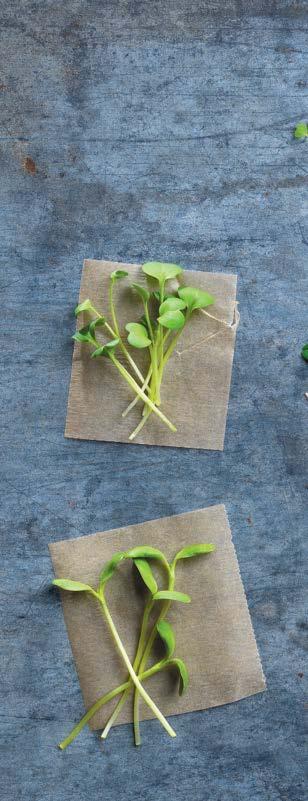
Microgreens, on the other hand, are grown in soil and need sun. Microgreens seeds are not eaten as they are below the soil level. They are harvested once their flavorful true leaves are grown and when they are about 2 inches tall—anything larger than 3 inches is considered a baby green. Even though they are tiny, microgreens taste similar to a full-grown vegetable. Another reason to choose microgreens—they have more nutrient value than sprouts OR baby greens. Some growers are dehydrating and offering their microgreens in a super food powder, which is a great way to mitigate potential waste if fresh micros don’t sell out.
Microgreens became hip in San Francisco in the 1980s when chefs began supercharging their menus with them. About the same time, Corralitos farm New Natives was pioneering this craze; after starting their farm in 1982, sustainable farmer activists Ken Kimes and Sandra Ward increased their microgreens and wheat grass acreage as customers learned of their wonderful health benefits and demand grew. Currently, the New Natives owners grow CCOF-certified organic micro cilantro, arugula, broccoli, buckwheat, scallions, daikon radish, kale and a micro mix in 40,000 square feet of greenhouse space, producing 2,000 pounds weekly for sale at both farmers’ markets and local grocery stores. They harvest their microgreens in the sprout stage when the plant is feeding from the seed, which is when concentrations of enzymes and vitamins are the highest. Their microgreens and wheat grass are sold year round at the Downtown Santa Cruz and Live Oak farmers’ markets, the Cabrillo College and Monterey Peninsula College markets and at the following retailers: Food Bin, Staff of Life, Deluxe Market, all New Leaf Markets and Whole Foods.
On the other side of the Monterey Bay, Cody Lake and his wife Melanie Corbett of Lake Family Forest Farms specialize in microgreens on their Carmel Valley homestead. Lake realized he had a green thumb in third grade when he grew a pea from seed. He has been propagating and planting ever since, and eventually built a greenhouse on his family’s land with the dream of raising ducks for the eggs and growing microgreens and various specialty crops like wine cap and almond mushrooms, edible flowers and perennial food crops that flourish on their 45-degree slope permaculture farm. The couple is working toward making their microgreens certified organic. To be organic, both the soil and the seed
Microgreens have many health benefits condensed in a small package. All varieties have high antioxidant compounds and vitamins that help prevent many different diseases.
Cody Lake harvests 30 pounds of microgreens a week from his greenhouse in Carmel Valley.

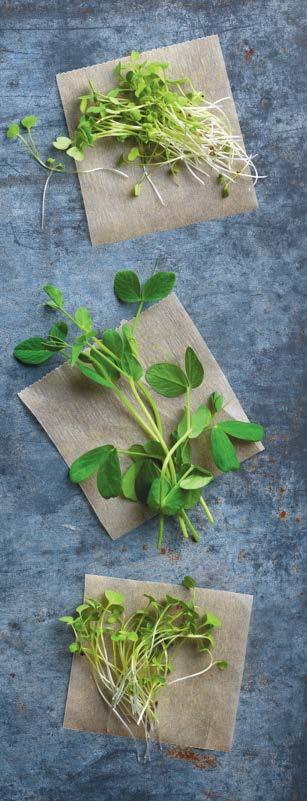
must be certified organic, which limits what varieties can be grown due to seed availability.
Since 2015 LFFF has provided pea shoots, sunflowers, daikon radish and micro arugula to local restaurants and markets, harvesting 30 pounds per week from its 250-square-foot greenhouse. Once harvested, ducks snack on the remaining stem stubble and root mass, and what is left is composted to build soil on the farm. You can find their microgreens at the Mid-Carmel Valley Farmers’ Market on Sundays year round between 10am and 2pm, and also on the menu at Stationaery in Carmel, Wild Fish in Pacific Grove and Epsilon in Monterey as well as in grocery stores, including Jerome’s in Carmel Valley, and Cornucopia and Nielsen Bros. Market in Carmel.
Microgreens have many health benefits condensed in a small package. All varieties have high antioxidant compounds and vitamins that help prevent many different diseases. My personal favorite, protein rich sunflower greens, contains a plethora of amino acids and lots of vitamins A, D, E, C and B complex. Brassica microgreens, like broccoli, kale and arugula, are high in sulforaphane that helps counteract cancer, diabetes and heart disease, and aids in digestion. Buckwheat seems to pack the most punch in the iron, calcium and micronutrient department while cleansing the lymphatic system and aiding circulation. Pea shoots are 26% protein, and high in macronutrients including folate, which protects against DNA damage.
With microgreens, a little goes a long way; people could grow microgreens in a small apartment with little space and reap the benefits, especially if fresh produce is hard to come by or cost prohibitive. All that is needed is a sunny window or some full-spectrum grow lights. Three trays of micros planted 10 days apart would provide a consecutive sup-
ply. There is even talk of growing microgreens on space shuttles to keep astronauts healthy!
Anything edible can be grown as a microgreen, but some grow more slowly than others so consider that when planting. It is important to use untreated seed, and organic seed is best if you can find it, from companies like High Mowing Organic Seeds, Johnny’s Selected Seeds or Mumm’s Sprouting Seeds. My personal trick for purchasing cheap black oil sunflower seed is to buy it in bulk as bird seed. The seeds have always sprouted well and are untreated because they are meant for birds to eat.
Find a tray that is at least a few inches deep. Put 1–2 inches of soil in the tray, and sprinkle seeds heavily so they cover the tray but don’t overlap. Sprinkle soil over the seeds, just enough to cover them. Place in a sunny location and keep moist until seeds come up; even misting the soil regularly can be enough if not grown in hot and direct sun. Typical microgreen varieties are harvested within 14 days. Harvest with a knife at the base of the soil and wash well to remove any soil residue. Compost spent soil and reuse if possible.
Most microgreens are best used cool, crisp and raw, with the exception of pea shoots which
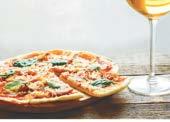

are lovely wilted. To keep your microgreens from cooking, add them last to your warm dishes and pile high to avoid contact and cooking.
Beet microgreens have a nice salty flavor that is a great addition to salads or a base for fish. Mustards provide spice to any dish and are ideal for soups, especially pumpkin. Sunflower greens are my favorite for everyday use, as they are nutty and mild with crunchy stems. Micro basil is lovely on top of a Caprese salad.
Add microgreens to a bowl of quinoa, put them on tacos, on top of pizzas (arugula would be my favorite for this purpose), in sandwiches or burgers, use them as an ingredient in rice wraps and nori rolls, put on top of egg salad or toss in a smoothie. Sweeter varieties, like pea shoots, can even be added atop desserts. How about a breakfast salad? Soft poached eggs on a bed of sunflower sprouts with microgreens and bacon pieces? Yes, please!
As you can see, microgreens are an important part of a health repertoire whether you grow them yourself or source them from a local farmer. Do your body a favor and include microgreens in your daily meals.
Jamie Collins is the owner of Serendipity Farms and attends all of the Santa Cruz Community Farmers’ Markets, where you can find her fresh organic fruit, vegetables and nutrient-dense prepared food items.


Tuna Salad
2 5-ounce cans or 2 packets Safe Catch Albacore tuna
¼ cup mayonnaise


1/8 cup capers
1/8 cup sweet pickles or cornichons, diced
3 tablespoons pickle juice
Mix together well, add a few pinches of sea salt and set aside.
Salad
4 cups sunflower sprouts for salad base
¾ cup shaved fennel
½ cup shelled English peas
2 hard-boiled eggs, sliced
2 ounces feta cheese
4 small Mandarin oranges or 2 large oranges, peeled and sliced
1 cup microgreens—arugula and scallions would be ideal but any variety will work ¼ cup almonds, sliced


½ cup olive oil










½ cup coconut aminos (I like Bragg’s) Juice from 4 Meyer lemons
Using two plates, assemble in the following order. On each plate, place 2 cups of sunflower sprouts , ½ of the feta, sprinkle ½ the fennel, ½ the peas, ½ the citrus and 1 egg. Put ½ of the tuna mixture in the middle of each plate. Top with microgreens and diced almonds. Pour dressing on the salad, avoiding the tuna mixture. Sprinkle with sea salt and fresh pepper. Serves 2.


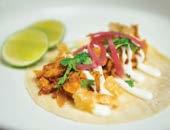





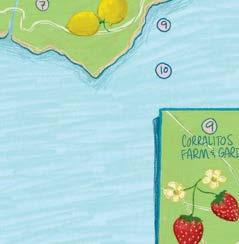

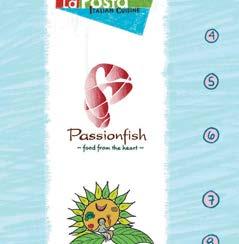



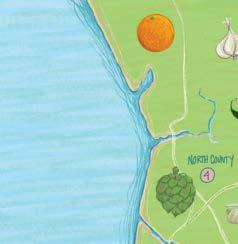


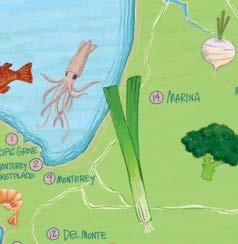








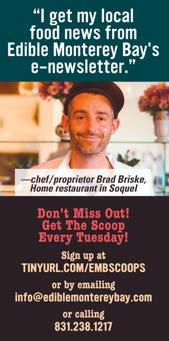







Our daily bread is a beautiful part of the Monterey Bay foodshed. These are some of our favorite loaves, handcrafted by local artisan bakers. (Top) 4-Seed Compagnon from Kelly’s French Bakery in Santa Cruz; (bottom) Holy Moly Sourdough from Companion Bakery in Santa Cruz; (right) Epi Baguette by Lafayette Bakery in Carmel; (opposite page clockwise from upper left) Pure Bake’s Monterey Sourdough; Organic Pure Rye from Beckmann’s; Sourdough Artichoke Loaf from Whale City Bakery in Davenport; and Olive Bread from Ad Astra Bread Co. in Seaside.
 PHOTO
PHOTO









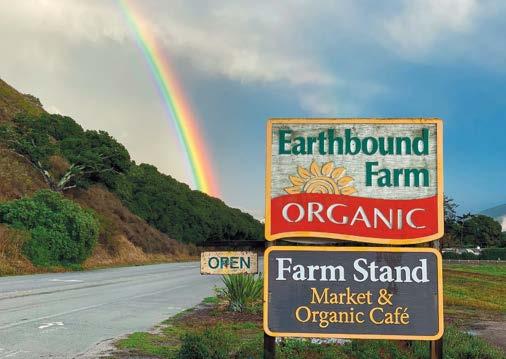
A youthquake of new food and drink businesses reinvigorates Monterey’s often overlooked neighbor STORY
 AND PHOTOGRAPHY BY MARK C. ANDERSON
AND PHOTOGRAPHY BY MARK C. ANDERSON
It doesn’t get much more Seaside than Dave Pacheco. He’s lived in the city for all of his 66 years. He swims at the city pool. He walks the city’s blocks for additional cardio—at 6’5” he’s hard to miss—and served as its parks and recreation chief basically forever, connecting hundreds of young Seasiders to sports and other resources. He’s currently a city councilman and mayor pro tem, knocking on doors and visiting voters at a clip that would make Bernie blush.
The point is: When it comes to Seaside, he’s seen it all, at least until a mild evening last October.
It was Oct. 19 when Other Brother Beer Co. opened and a full-on scene exploded. Upwards of 250 people of different ages and backgrounds turned up for a taste of the first craft beer commercially brewed in the city, and creative snacks from in-house operation Ad Astra Bread Co. They basked in the airy beer garden-style space dotted with picnic tables and booths, all bordered by roll-up garage doors, soothing yellow walls, the windowed Ad Astra kitchen, a bar with 25 shiny taps and a gleaming production space, where brewer Kevin Brown toured interest-
ed parties. They sipped on Super Custom Kentucky Common, Bucket Brown Ale and smooth Builder’s Oatmeal Stout while grazing on fresh pretzels, garlicky delicata squash and “Spudboy” flatbreads with potato, thyme and olive oil.
Yes, the flood of fans was thirsty after delays pushed back the opening multiple months, but this was more than pent-up demand. This was a social happening that drew from across the area in ways longtime locals like Pacheco had never experienced.
“That was amazing. I can’t think of a time I’ve seen something like that over here,” he said afterwards. “It was a powerful statement about Seaside and the transition it’s been making over the past decade. It was a whole new generation having fun in a community where they didn’t hang out in the past.”
The youthful energy Pacheco picked up is a reflection of the staff and leadership at OBBC, which ranges from 22–35, and—like 32-year-old co-founder Evan Loewy—often cite skateboarding as a key part of their chemistry.
“It’s a huge impact on how we approach something—you try a move a thousand times before you land it,” says Loewy, who was part of a core who assembled much of the brewery by hand. “[Skating] has always been a DIY industry, and that’s ingrained in how we were with this.”
Ad Astra exec chef/skateboard enthusiast Ron Mendoza has worked in world-class kitchens like Michelin-starred Aubergine, earning James Beard accolades along the way. But he seems more at home doing what he calls “good ingredients in simple things that can be held in one hand with a beer in the other.”
“We’re enjoyable and accessible,” Mendoza says. “What I like most is people returning four times a week. It’s communal.”
While the Other Brother-Ad Astra opening was the biggest in municipal memory, it is only one part of the new and promising projects happening citywide, many of them focused on made-over Broadway Avenue/ Obama Way where the brewery is now an anchor. As part of a $7 million project, Broadway had its sidewalks widened and framed with new foliage, bike lanes and bike racks added and benches snuggled along the more verdant but still scrappy main street.
The city’s Community Development Director Gloria Stearns spearheads the renewal.

“We call it setting the table, make conditions hospitable for business,” she says, citing assistance in waiving permit fees, offering free small business consulting, communicating with police on business concerns and cultivating events like Car Week’s massive Exotics on Broadway. “We believe in place-making, [creating] a sense of fun coming down here.”
Her goals for downtown can sound ambitious, but she is bullish on meeting them, and even advocates new roof spaces for hanging out and looking at the ocean.
“We believe in the power of 10,” she says. “Why do you like downtown? There should be at least 10 reasons, then you have a successful downtown. I don’t know if we’re there yet, but it’s getting closer.”
Upscale butcher-deli The Meatery—located on the other side of Fremont Boulevard—was one of the first new food businesses to set up shop two years ago, joining longtime local favorite Acme Coffee Roasting. The Meatery just got a new executive chef in Bernardus alum Bryce Hansen, who’s eager to build out industry nights, small-bite options and pop-ups like January’s “Warm Buns, Cold Beer.”
“I like different ways for people to get to know us a little bit,” he says. “No reservations, just a place to mix it up in a free-flowing environment.”
The popular taqueria Las Cazuelas debuted in January across from OBBC. Down Broadway there are plans in the works for a yet-unnamed, vegetarian-driven Mediterranean restaurant occupying 766 and 768. The point man there is Heydar Movahedi of Hedi’s Shoes. Its promising design elements include a retractable front wall with sidewalk seating. The hopeful opening target is early fall. A couple doors down, The Oven has 30-something pizza guru David Rodriguez at the helm, as he has been since 2018. Next door to him, The Hem Nutrition opened in midDecember, serving fun and forward-thinking drinks like frosted animal cookie shakes, Wonder Woman pomegranate-strawberry-watermelon tea and pumpkin-spiced protein coffee.
“The street is attracting a lot of good spots in a short amount of time,” says Rodriguez, who carries Other Brother on tap and frequents The Hem. “The businesses are helping each other attract new clientele, [including] natives who haven’t been on Broadway in a while. I hear them sound blown away at everything that has popped up.”
The Hem’s owner operator Asia Smith, 29, who was born and raised in Seaside, echoes that.


“I’ve been present for a lot of stages of this city,” she says. “It’s beautiful seeing the community come together and see friends start supporting local businesses and see everybody be excited about the growth.”
Two doors from The Hem, Urbn Leaf introduced a gorgeous and gallery-like recreational marijuana dispensary in June. Up at the City
Center near Other Brother, new THC/CBD spot MedMen also faces Broadway, and looks directly at Other Brother.
Meanwhile—new scene, same city—The Reef recently debuted its own expansive and aesthetically pleasing dispensary across town at 1900 Fremont. The most prominent neighborhood improvement piece, a huge stylized mural of a humpback by local artists Lisa Haas, Maryia Hryharenka and Hanif Wondir, came in June. The Reef’s most flavorful play, though—besides the Coda Fruit Notes strawberry-rhubarb gummies—is plans for a cannabis restaurant.
“We believe in the power of 10,” she says. “Why do you like downtown? There should be at least 10 reasons, then you have a successful downtown. I don’t know if we’re there yet, but it’s getting closer.”Chef Ron Mendoza is in his element at Ad Astra Bread Co. and (above) lemon curd and blueberry pancakes at The Butter House
General Manager Michael Holly envisions building on the Cheerslike atmosphere of the dispensary with a range of flavored popcorn, various paninis and more for what is tentatively called High Tide Café.
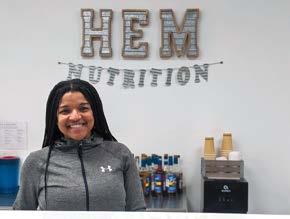
“We’re thinking munchie foods that go with the cannabis lifestyle,” he says. “We want to take the dispensary to a whole other level with a fun and friendly type of experience.”
Back on Broadway, Counterpoint Coffee has quickly amassed a loyal following drawn to the passions of 31-year-old, owner-operator Max Georis since opening on New Year’s Eve 2018.
“I love vinyl, so there are vinyl records that we play throughout the day, and I love great coffee, so there’s great coffee,” he tells visitors, not adding that he makes and serves a lot of it. “I like to drink beer, so we put in craft beer taps. I guess you can say at no point is anything faked because I’ve created a room full of my interests.”
Those elements reinforce an overall design that is hip without being overwrought. Near the vintage vinyl, ranging from Stan Getz to Wu Tang to Simon and Garfunkel, stands a bare particle board bookshelf with titles like Chefs Eat Melts Too and How to Swear. Next to that is a chess board and a crowd-curated shrine of sorts with Buddha, paintings and a skate deck. Pastries from his family’s restaurants and a nice depth of wines and trendy canned drinks round things out, while the most dramatic component hides behind a closed door: Georis’ industrygrade mixing and mastering music studio, where he just completed an 18-month composition project, can be booked by appointment. (Only serious musicians need apply.)
Kitty-corner from Counterpoint, Max’s brother Klaus Georis, 29, hopes to conjure his own stylish Seaside spot via “affordable fine dining” destination Maligne, target date mid-summer 2020. Maligne is the feminine of malin, which in French means clever and mischievous. “When I was a little kid, I was called malin all the time because I was always getting into things I shouldn’t,” Klaus says. “And feminine suits the almost delicate style of cooking I like to do.”
That includes wood-fired goodies roasted at the center of the space,

which will enjoy a display kitchen along one wall and a lot of raw and seafood elements—oysters, prawn cocktails, whole-roasted fish finished with oyster Béarnaise—to complement a pantry of fermented foods.
While the complete gutting of the building is ongoing, Klaus has been fine tuning his skills as sous chef for Michelin-starred chef Dominique Crenn’s 100% pescatarian Bar Crenn in San Francisco—and his paying close attention to the culture created by Crenn and company. In Seaside he’s loving how helpful the city has been in planning and permitting as much as the new buzz on Broadway.
“I’m seeing a lot of people who are looking to come here and open and believe in Seaside,” he says. “Remembering what the street used to look like and where it’s heading is powerful.”
Monterey Bay eaters may recognize the Georis name from their family’s celebrated restaurants in Carmel; their dad Walter and uncle Gaston created Casanova and La Bicyclette. That adds a symbolic and poetic quality to the ongoing shift: The next generation of tastemakers is figuratively and literally choosing Seaside as its launchpad over places like Carmel-by-the-Sea.
Continuing west, another new piece is among the most intriguing, albeit with a different angle than the youth movement.
Darryl Choates is old-school Seaside, having served as a polarizing councilman for 16 years, directing the Monterey Bay Blues Festival for a quarter century and operating Ord Market even longer. He hopes to open Deja Blue in the former Dunes by the time this publishes, though that seems ambitious. The place will feature a Champagne bar, a wine bar, a daiquiri bar, a basic 15-item pub menu and a 10% discount for

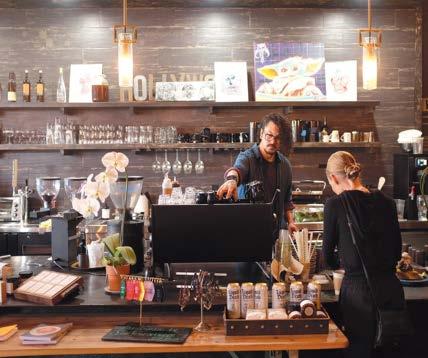
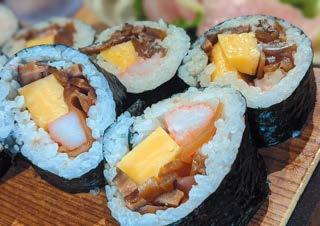
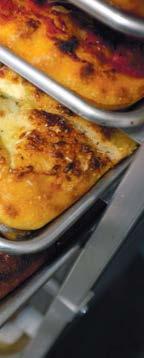
date night. Entertainment will include live music booked by jazz mind Leon Joyce (and supported by the house band) and live comedy.

“We want couples to come out and enjoy live music, comedy and dinner,” he says. “The vision for Seaside has been going on for a number of years and it’s gotten to the point where it’s a good investment to be here.”
While Broadway has served as the epicenter of Seaside’s evolution, the city enjoys another surprising hub: a funky strip mall complex called University Plaza. To be fair, it’s stocked with some classic stars, including some of the best Thai food and affordable sushi and Mexican and German fare in Monterey County (see sidebar, p. 35), but the recent influx of youthful energy has been prodigious.
Hexbox Fitness + Crossfit, which debuted in May, has been an immediate hit. Relocated and dramatically expanded Sanctuary Climbing Gym, opening as this goes to press, has all sorts of smart design plans for its 10,000 square feet. One new place there is 2019’s breakout “pinhead” heaven, Lynn’s Arcade: A Pinball Parlor and Can Slangery. (The cans being slung are curated craft beer.) It’s a wonderland of 20 hard-to-find machines like Family Guy, The Big Lebowski, 2001 and Jurassic Park; enthusiastic league nights; and BYO food to pair with beers from small outfits like Moonraker and Evil Twin, plus kombuchas, sodas and waters.
The epicurean belle of University Plaza, though, graces the other side of the parking
lot: The Butter House, yet another fresh recent development that opened in August with youthful local owners, restaurant pros Susan and Ben Mosqueda.

Gone are the greasy but somehow charming things that made the Nifty 50s Diner classic blue-collar fare: patchy booth fabrics, iffy kitchen cleanliness, and outdated carpets, paint and countertops.
In have come a simple and smart design, stylish counters, clean lines, fresh paint, nice finishing details and crave-able comfort food spiked with Polynesian-Filipino fun—loco moco in a lake of gravy, pork belly and eggs, fried chicken sandwiches, spectacular lemon curd pancakes and butter-fried rice with bacon, sausage and Spam.
Full houses are common. Even more ubiquitous is the presence of Seaside old guard who made Nifty 50s their go-to years ago. Community organizer Helen Rucker and mayor Ian Oglesby still come in to share a table so frequently the Mosquedas dedicated buttons on their register for what they order.
Another regular is Pacheco.



“Butter House and all the family-friendly new businesses give Seaside that much more connectivity,” he says. “I love it when people come back for the first time in a while and are amazed with the changes.”


Mark C. Anderson is a roving writer, photographer, editor and entrepreneur based in Seaside and beyond. Follow and/or reach him on Twitter and Instagram via @MontereyMCA.



Seaside is alive with new arrivals. But its time-honored standbys are still awesome. The city has delivered the densest concentration of international cuisine on the Monterey Bay for years. Case in point: While Broadway Avenue experiences a rebirth, the Japanese restaurant at its intersection with Del Monte Boulevard hasn’t changed much at all. The funky and outdated exterior belies its status as a community treasure—on any given night celebrated chefs, including the likes of Cachagua General Store’s Mike Jones and Monterey Peninsula Country Club’s Cy Yontz—patronize this place.
It’s not the only timeless spot on this list, which leans global in flavor profile but also includes some vintage favorites that are decidedly American, and 100% Seaside. Here are some of our picks:
Acme Coffee 485 Palm Ave., Ste. B
This place gets an A+ for all its Fs: family owned, fair trade, fresh, flavorful. The converted mechanic’s garage is completely adored by locals.
Baan Thai 1760 Fremont Blvd., Ste. F1 Frequently voted the best Thai restaurant in the county, its humble and hidden strip-mall location is a mecca for curries and soups.
Baldemiro’s 2008 Fremont Blvd. Keeping with the community institution theme, this place is a pillar for many, thanks to sweet service, rolled tacos and a generous menu, in terms of options and burrito size.
The Breakfast Club 1130 Fremont Blvd., Ste. 201
If this place closed, Seaside might collapse. Here the formula is heaping plates, creative takes on classics, incredible service and a true family feel.
Ferdi’s 740 Broadway Ave.
The decor is dusty, the team can be grumpy, but it’s all worth it for the lunch-only items like the blackened chicken sandwich, robust gumbo and other Creole-style specialties like the spicy Big Easy burger.
Gusto Handcrafted Pizza and Pasta 1901 Fremont Blvd.
Not exactly old-school Seaside, but such a popular place—thanks to Northern Italianstyle pizza and from-scratch lasagna—that it feels like it’s been there forever.
Ichi-Riki 1603 Del Monte Blvd.
The best case scenario is to sit at the sushi bar and let the chef take care of you. This is a complete Japanese cuisine powerhouse hiding in plain sight.
Mal’s Market 1264 Noche Buena St.
A humble neighborhood market with an earnest sandwich menu that features rustic breakfast sandwiches and over-the-top lunchers like the Bomber and the Philly cheese with secret-recipe jalapeño sauce.
Mi Tierra 1000 Broadway Ave. This one is younger than the rest on this list, but feels like it’s been here forever, bringing spit-roasted al pastor and crispy lengua to die-hard fans in a supermercado setting.
Papa Chevo’s University Plaza, 1760 Fremont Blvd., Ste. A2
From the same family that brought Seaside Baldemiro’s, the best place for a chile relleno or breakfast burrito in a homemade flour tortilla.
Stammtisch 1204 Echo Ave.
This place is a trip. The husband-wife team behind it is 100% into Germanity, from the costumes to the menu to the heritage.
Turtle Bay Taqueria 1301 Fremont Blvd. This is unique for its pan-Yucatan sensibility for inventive “tostacos” with seasoned calamari and sustainable sand dabs with super-powered house hot salsas.
La Tortuga Torteria 1257 Fremont Blvd.
Like so many of these spots, it’s unfeasible to imagine Seaside without it. The grilled sandwiches are the namesake specialty, but the menu runs far and wide while staying uber-authentic and affordable.
New urban furniture, wider sidewalks, bike lanes and fresh foliage have made Seaside more inviting.

Raise a toast to one of the creators of the Santa Cruz Mountains wine appellation and his legacy
BY LAURA NESS PHOTOGRAPHY BY JULES HOLDSWORTHLife is sometimes an arc that leads to you back to where you belong. You just don’t know when, how or why. When Jeff Emery, a 19-year-old college student at UC Santa Cruz, got the call to help the owner of Santa Cruz Mountain Vineyard bottle wine in 1979, he could never have imagined that he would spend, literally, the rest of his life in the wine business. Because one little phone call can change everything, it’s always best to answer. You can always hang up.
If you believe in fate, Emery’s was cast long before he was born. The tale begins with a very young Ken Burnap, trying to impress a young lady in Texas. “I was smitten by this girl, Mary Ellen, but her mother didn’t think much of me. I decided to impress her, and take her to the fanciest restaurant in town.” Naturally, it came complete with one of those super snooty sommeliers. Never mind that Burnap was just 18. He looked 21, which came in handy when buying beer for the boys, or in this case, wine for the girl.
Naturally, Burnap butchered the name of the fancy French wine he ordered and the somm corrected him with haughty disdain. The next morning, Burnap was in the library, reading everything he could about French wine. His obsession grew. He traveled to France, befriended vignerons, became an expert in every region, beginning with Bordeaux, but eventually falling for the charms of Burgundy. His wine collection grew, along with his circle of winemaker friends. Food and wine became his life’s passion, although the construction business was his means to an end.
Along the way, Burnap and a business colleague, Howard Philippi, decided to open a restaurant in Orange County called The Hobbit. It had a huge basement, perfect for storing wines. Guests entered through a trap door, where they were greeted with Champagne, then asked to choose a bottle to accompany their dinner. Upstairs they would go, feasting their way through a splendid multicourse meal that often didn’t wrap up until 1am. It was Burnap’s idea of the good life.
He admits, “We had no idea what we were doing. The first week, we invited all our friends, and that was great. Then what? We got out the yellow pages and invited all the doctors. We sent them written invitations. There was some debate: Were chiropractors really doctors? We invited them anyway.” One day, the restaurant critic from the LA Times came to dine and was most impressed. She offered to get her writeup placed in the Sunday edition, which had a wider circulation than the Thursday paper, where her restaurant reviews usually appeared.
“The Sunday edition hit on a Saturday, and the phone started ringing off the hook,” recalls Burnap. “It was crazy! We had to start taking reservations a year in advance. We’d call people to remind them, and they’d say, ‘Oh, my husband must have made that reservation. We’re no longer together!’ And we’d say, bring somebody else then!” Howard’s son, Mike, now runs the restaurant, which continues to thrive.
Meanwhile, Burnap’s lust for Burgundy sparked the desire to have his own vineyard in California where he could make pinot noir. He was leaning towards the Santa Cruz Mountains, when he crossed paths with David Bruce, who was going through a divorce and needed to unload some assets in order to purchase the winery from his ex. One of those assets happened to be a dry-farmed vineyard on Jarvis Road that was planted to zinfandel and pinot noir. “I loved the 1968 zin,” says Burnap. “It was one of my favorite wines that Dr. David ever made.” The vineyard, first planted in 1863, has a stunning view of the Monterey Bay. It was love at first sight. Burnap had to have it. And that’s how Emery came into the picture.
“Bring your toothbrush and a change of clothes,” Emery’s friend told him on that day in 1979. “You might be there a while.” Indeed, he never left. Burnap went on to help map out the original Santa Cruz Mountains appellation and get it approved as an American Viticultural Area (AVA) in 1981.
The vineyard, first planted in 1863, has a stunning view of the Monterey Bay. It was love at first sight. Burnap had to have it.

Fast forward 40 years, and Burnap and Emery are sitting together in the current production facility of Santa Cruz Mountain Vineyard, on Swift Street in Santa Cruz, flipping through some of Burnap’s old log books, tasting a couple of wines from their early years together. One is a 1977 labeled “Caberenet Sauvignon.” It’s a bit dusty, oozing of pine and well-preserved cab character, owing to 12% alcohol. Says Emery of the flagrant typo on the label, “Somebody in TTB approved that label! What did I know about cabernet back then?” TTB is the Alcohol and Tobacco Tax and Trade Bureau which regulates the wine industry.
They also have a 1974 gallon jug open from the very first pinot noir harvest off the Jarvis estate: It’s redolent of orange peel, iodine and history. Tasting with them are two of the young men who have apprenticed with Emery: Cole Thomas and Ken Swegles, both having served as his assistant winemakers, along with Dennis Hoey. All three have gone on to create their own wine brands: Hoey with Odonata, and Swegles and Thomas with Madson. All owe their careers to Burnap, who admits he’s spent more time with Emery than with his own kids.
With 40 years to talk about, there’s a lot of bouncing around. Emery and Burnap flash back to January of 1983, when rains in the Santa Cruz Mountains caused extreme flooding and mudslides. “It was right after the holidays, and we hadn’t been at the winery in a long time, so we had no supplies,” recalls Burnap. The power went out. Burnap decided to leave but didn’t get far.
“Fortunately, we had lots of cans of pâté,” recalls Emery. “And wine!” Burnap called his buddies in LA (remember land lines? they come in handy) and told them, “We’re starting with the 1950 Burgundies and drinking our way through the cellar! They went crazy!” After about a week, Burnap had had it, and walked out, climbing over massive entanglements of trees and rubble.
Burnap says 1975 was his favorite vintage from the Jarvis vineyard. “It was better than when my first kid was born! Such a great vintage. I love 1988 and 1989, too. I figured I made a great wine every 10 years or so. In Burgundy, they claim they make great wine every year!”

Around 2003, Burnap decided to retire and sail around the world. The vineyard was sold in 2004. Emery, who bought the brand (but not the vineyard), was heartbroken, knowing that he could no longer make wine at this storied place. It had been his office all his adult life. It felt like having a body part severed. He made the last vintage from the property in 2003. The new owners made a bungled attempt to continue its pinot prowess, but failed. That’s another story.
Emery moved on, making wines at Big Basin Vineyards in Boulder Creek, until moving in 2008 to his current location on Swift Street.
Burnap, now 89, has no intention of slowing down. He eagerly looks forward to trying a new restaurant or going sailing. Asked if he still dreams about owning a vineyard, he quickly nods in the affirmative. Where would that vineyard be, if you could pick anywhere? “Jarvis. I would want my old vineyard back. There is no place like it in the world.”
Did he ever return to that snooty French restaurant that, like Helen of Troy, launched a thousand unsuspecting ships? “No,” he says. “And I regret it.” You might expect that Burnap had, all these years, wanted to tell that somm off, to set him straight, to give him a dose of his own medicine.
“No,” says Burnap. “I really regret not going back to thank him.”
Laura Ness is a longtime wine journalist, columnist and judge who contributes regularly to Edible Monterey Bay, Spirited, WineOh.Tv, Los Gatos Magazine and Wine Industry Network. Her passion is telling stories about the intriguing characters who inhabit the fascinating world of wine and food.
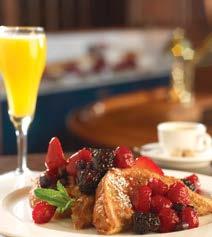
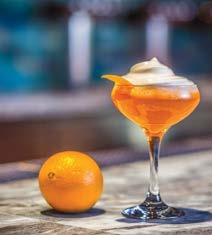
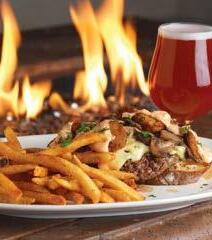



Wine tasting and education from a Santa Cruz County vintner paired with a savory dinner at Kitchen Table

Hands-on cooking class and dining with a local dietician, followed by a guided nature walk
Among the Redwoods Breakfast and lunch creations at Kitchen Table complemented by a walkand-talk around campus trails
Get creative with a sauce that easily adapts for any style of cuisine
STORY AND PHOTOGRAPHY BY JESSICA TUNIS AND AMBER TURPINTo whom shall we attribute the green sauce? So many cultures claim a variation. Whether it is chimichurri from Argentina (which came by way of Ireland or India, depending on the slant of your origin story), zhoug from Yemen or chermoula from Morocco, Algeria and Tunisia, the merits of a finely chopped or blended green sauce are recognized worldwide. Some variation of the theme is almost always on the menu in our homes year round, but spring finds this recipe especially salient, green as she is, with fresh flavors and inspired spices from around the world.
Think of this as a blueprint, or a greenprint if you like, from which your palate can guide you in any direction. The base of this variable green sauce is made primarily of parsley (and perhaps cilantro or mint or basil), a bit of garlic, a squeeze of lemon, some olive oil, a

pinch of salt and a grind of pepper to taste. On a night when inspiration is lacking, this simple green sauce is plenty, is more than enough even, vibrant and full of flavors that can meld with many a cuisine.
It can take you further, though. It’s helpful when ad libbing further variations of this sauce to think in terms of flavor families, or flavor profiles—the association of flavors, spices and textures that are most closely related to the cuisine you’re cooking. Warm Indian spices like ginger root, cardamom and cumin shift the association eastward, mint and yogurt might do the same. Oregano, jalapeño and basil might shift it south, down towards chimichurri territory. Capers and fennel might give you visions of Mediterranean cliffs hung with wild herbs, and it’s a short hop to pesto if you add pine nuts. Sometimes we have no specific destination in mind, only a
















drawer full of vegetables or a garden bed brimming with herbs about to bolt. No matter the source of your ingredients, the idea is to blend or to process the base herbs, in conjunction with an allium of choice, some oil, a bit of acid, and some spices. While we have listed some of our favorite variations here, the list of potential ingredients is vast. That’s why there are so many ingredients listed on the list of variations.
In their traditional named forms, these sauces might have more or less oil, a smoother or a leafier texture. We don’t fret about it, much, or we choose based on whether we feel like drizzling or spooning a sauce. (Real talk: Sometimes we choose based on which piece of equipment feels like less of a bother to wash.) All of these recipes are made by combining the ingredients in a blender or food processor until the desired texture is reached. A blender will give you a smoother,
silkier, more uniform sauce, while a food processor will give a finely chopped texture. For a thinner sauce, we add up to another half cup of oil, and increase the salt and acid to balance it, if needed.
Finally, it is worth noting here that “bunch” is a somewhat arbitrary term, as parsley and cilantro are “bunched” in larger quantities than dill or mint. We usually use the leafy tops and reserve the stalks for broth, but carefully washed stalks can help stretch a sauce further without damaging the flavors.

a relaxing dinner at one of The Barnyard’s popular restaurants, recognized regionally for their outstanding menus and superb service ALLEGRO PIZZERIA AABHA INDIAN CUISINE LUGANO SWISS BISTRO DINING AT THE Enjoy


ROBATA



I remember the first time I touched an onion. It was 1998, I was 17 and had literally just stepped into my first professional kitchen job. The chef pointed to a 50-pound bag of onions and said, “You can start by peeling those.” Peeling an onion may be a straightforward task for some people, but I had never even laid a hand on an onion. My mother has an aversion, bordering on an allergic reaction, to alliums in every shape and form. She detests the smell and flavor and had banished them from her kitchen long before I ever entered the picture.


Yet there I was, an aspiring teenage cook, eager to please the chef who had just hired me. I lugged the bag up onto the prep table and wrestled through the thick plastic netting with a dull knife that was hanging on the wall. I half cut, half bludgeoned the outer peel, pulling at the yellow flesh with my fingernails. By the second onion, my eyes were welling with tears and stinging. I tried to wipe away the tears with the back of my hand and that only exacerbated my condition. I clenched my eyes shut and felt my way across the kitchen and out the side door, thinking that my mother might have been right— onions really were evil!
The onion’s dark magic is actually a sophisticated defense mechanism, stemming from an enzyme called alliinase. As soon as the skin of the onion is broken and cells of the flesh are damaged, the enzyme is released and comes in contact with an odorless compound called isoalliin. This convergence creates a new volatile compound called 1-propenyl sulfenic acid that is in turn quickly converted into thiosulfinates and thiosulfonates. You would recognize these as the pungent odor and sharp flavor of raw onions. At the same time, another reaction is creating propanethial-S-oxide, or PSO—the com-
pound responsible for making you tear up. As soon as your knife cuts through the skin of an onion, you unleash a powerful weapon biologically engineered to protect the tender bulbs. Small wonder both home cooks and professional chefs turn away from the plain jane of onions, the yellow onion, to the promise of a sweet Vidalia or Maui. Historically, having onions in the larder was often a matter of life and death. Sailors on long voyages were expected to bring their own supply of onions because they were one of the few sources of vitamin C that would last for the duration of an open ocean crossing. Before this became common practice, thousands of sailors died of scurvy. Onions were also a staple for pioneers settling the West, and were one of the food staples for any covered wagon train. During the Civil War onions were such an important part of the troops’ diet that General Ulysses S. Grant stopped the forward progress of an entire army until a shipment of onions was delivered.
There are hundreds of varieties of onions to choose from, but generally globe onions can be classified into two categories, pungent and mild (also called sweet). Onions grown in less sulfurous soils have less alliinase, making them sweeter and less offensive in their raw state. Some onions known for being particularly mild and sweet, such as Vidalia or Maui, are created by growing sweeter cultivars in soil that is naturally low in sulfur. Typically, the mild varieties are large in size, have thick rings and paper skin that sometimes falls right off the bulb. The more pungent onions are smaller in size with tighter rings and skin. The other major difference is the type of storage required. Mild onions are best eaten within a few weeks of being harvested while pungent onions can be cellared for up to a year. The reason for this is that the same sulfurous tear-
When it comes to developing a deep savory base for your recipe, more crying equals better results.
jerking compounds found in pungent onions act as a natural preservative. Because of this, sweet onions are highly seasonal and best in early summer when they are plentiful, while pungent onions can be found year-round.
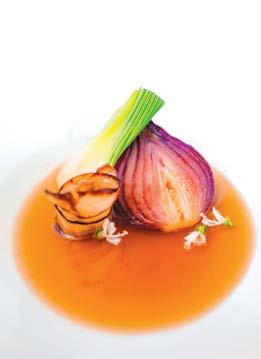
You might wonder why, if onions can be grown sweeter and less tear jerking, farmers don’t just do it that way all the time. Why not just always buy sweet onions? The answer lies in the same biological defense mechanism. PSO, that little compound that makes you feel like you are under a teargas attack, transforms into something incredible when heated. The new compound is called 3-mercapto-2-methylpentan-1-ol (MMP). This reaction, first formally documented by science in 2004, but surely recognized by cooks for hundreds of years, creates umami, that incredible fifth flavor, found in fermented products and roasted meats. MMP is water soluble and the best way to understand its importance is to try a spoonful of classic French onion soup. Raw sweet onions have less PSO, which means less MMP when cooked.
As a cook, it’s critical to understand that the more PSO you start with, the more MMP you will end up with. But it’s not simply a question of buying pungent onions; it’s also a matter of technique. In fact, many cultures finely chop onions, sometimes in combination with other ingredients such as peppers or celery, into a paste before using them. From the sofrito used as a base in Spanish and Portuguese dishes to the onion purée used prolifically in Indian cuisine and the omnipresent mirepoix of classic French recipes, finely chopped or puréed onion can be found in kitchens around the world. Whether you finely chop the onions with a knife, pulse them in a blender, crush them with the back of a pan or run them across a grater, the goal is to damage the onion cells as much as possible before applying them to heat. In other words, when it comes to developing a deep savory base for your recipe, more crying equals better results.
Now, if you want a perfectly sweet slice of onion on a sandwich, or a crisp ribbon of mild onion running through a ceviche, you want to take the opposite approach.
Few kitchen skills serve to separate the professionals from enthusiasts as quickly as slicing an onion. The trained kitchen mercenary makes quick work of slicing an onion. With a quick turn and two swift slices the root and head of the bulb are severed from the body. A shallow swipe with the tip of the knife releases the papery skin that peels away easily, leaving a perfectly clean bulb. The onion is then sliced in half across the rings and laid flat side against the cutting board. Curling the control hand into a gnarled claw, the chef will stabilize the onions while sliding the blade of the knife against the knuckle of their index finger. Once in position the chef unleashes a barrage of slices so acute and adept that the knife appears to leave the onion undamaged. Only when the chef makes the final cut does the bulb collapse into a pile of nearly transparent threads.
Not only do weathered chefs make this flourish of knife skills look effortless, they also rarely even deign to glance at the cutting board or razor-sharp blade flashing across their fingertips. All this, and seldom is a single tear shed. It turns out when your knife is razor sharp, the blade does little damage to the cells of the onion and, in turn, it doesn’t release the noxious fumes of PSO, resulting in a milder onion and more delicate flavor.
Slice 10 onions as thinly as possible. Cover with 1 gallon of water. Slowly simmer for 2 hours, strain onions and reserve liquid. Reduce liquid until dark and the consistency of honey when cool. Spread on toast. Use in salad dressings and glazes. Drizzle on cheese or vegetables. Makes ½ cup.
I can’t remember what recipe I was peeling that 50 pound bag of onions for. More likely than not, it was a task to keep me out of the way of the sharp knives and skilled cooks.
While onions can no longer be considered a matter of life and death, they are clearly one of the most important ingredients in any chef’s repertoire. Personally, I can’t even imagine a kitchen without any onions. There is something transformative about the lowly bulbs. What other ingredient can be simply combined with water, simmered for hours and slowly emerge as a savory, complex, amber syrup? From the crisp bite and fresh sweetness of a slice of raw onion garnishing a burger to the decadent smooth paste of caramelized onions, there are few more fundamental yet versatile ingredients. Taking the time to understand each onion variety and learning how cutting and heating transform their flavor are important lessons for any cook, so sharpen your knives and get your tissues handy.
The former executive chef at Post Ranch Inn’s Sierra Mar, John Cox is now pursuing a number of projects, including serving as a partner and consulting chef at Cultura—comida y bebida in Carmel and Cult Taco in Monterey. For more, go to chefjohncox.com or follow him on Instagram and Facebook.
2 yellow onions
½ cup sugar
2 tablespoons water
½ cup vinegar
1 sheet puff pastry
Preheat oven to 400° F.
Grease six individual ramekins. Slice onions into ½-inch discs.
In a heavy cast iron skillet, carefully brown circles of onion in butter or oil, remove and set aside.
In the same pan, make gastrique by mixing sugar and water and cooking
until caramelized, then adding vinegar and cooking down to a syrupy consistency. (You can also use honey and cider vinegar if you prefer.)
Pour equal amounts of gastrique into each ramekin and place a circle of onion on top.
Cut out circles of puff pastry to fit into the ramekins. Place one puff pastry circle over each onion circle.
Bake until pastry is golden. Turn out and garnish with whipped goat cheese and herbs. Makes 6 tarts.
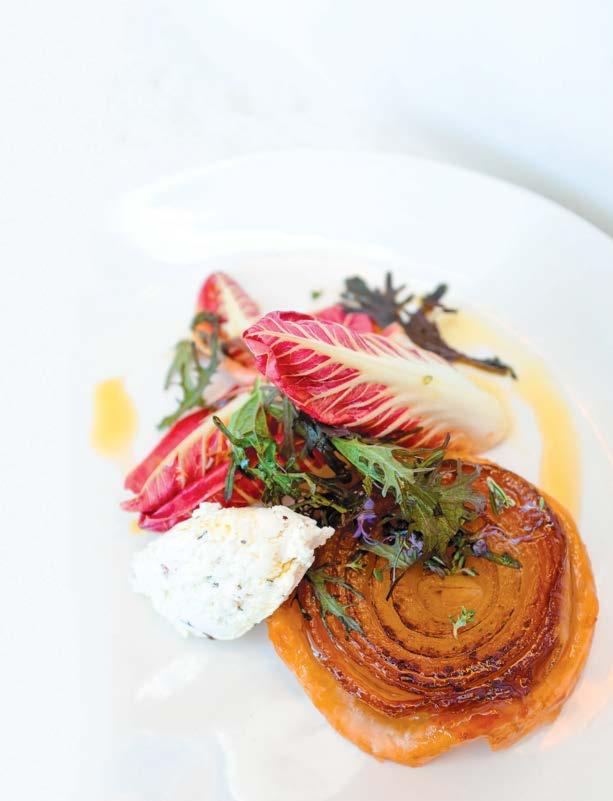

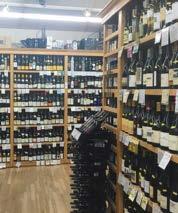
















A springtime delicacy you can make at home
BY MARTIN HOELLRIGL PHOTOGRAPHY BY CHRIS SCHMAUCHGrowing up at 9,000 feet elevation in the Austrian Alps, salmon was a rare treat. Fresh salmon had to be imported to the lands where rivers and lakes froze in winter. Only the fanciest restaurants had saltwater fish on their menus.


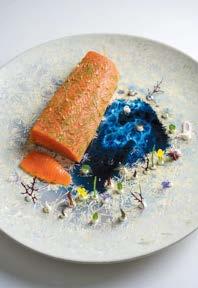
Smoked and cured fish were a different story. This was a food for special occasions and it was available at some pricey delicatessens, imported mostly from Scandinavia and presented in tiny thin slices next to Russian caviar.
My first taste of salmon tartare at an upscale restaurant in the early 1980s inspired me to become a chef. After graduation from the Austrian tourism college, I developed my passion for fish and seafood in several trendy restaurants in Europe, eventually becoming chef poissonnier (fish chef) at a Michelin-starred spot in southwest Germany. There, for the first time, I could fully indulge my passion for seafood. We had a saltwater aquarium, a smoker in the back and a super happy Martin in the kitchen!

The practice of preserving fish by salting it originated as early as 3,000 BC in Mesopotamia, where cooked fish was preserved in sesame oil and dried fish was part of the Sumerian diet. Phoenicians traded salted fish in the Eastern Mediterranean region and the Romans acquired curing procedures from the Greeks and further developed methods to pickle fish. There are several ways to cure salmon, but salt is the primary ingredient used to cure fish everywhere in the world. It not only draws moisture out of the fish, the saline-rich environment also works through osmosis to draw water out of micro-organisms that cause spoilage, retarding their growth.
When I moved to Capitola and founded Capitola Garden Feast in 2018, I found I could cook all the salmon I wanted, pairing it with fine chardonnays from the Santa Cruz Mountains. Some of my favorites are Beauregard, Wrights Station, Lester, Bargetto, Alfaro and Stockwell Cellars on the west side of Santa Cruz.
The most important aspect of salmon is freshness. It’s not always easy to find high quality fish all the time, even though we live right by the ocean. Sometimes I go to Aloha Seafood in San Francisco, but you have to be there at 4am. Locally, I get fish from Ocean2Table, Phil’s Fish Market in Moss Landing and The Fish Lady in Capitola, where I trust the freshness and quality.
Many species of salmon work for curing. In order, my favorite kinds are: 1) silver coho salmon; 2) king or chinook salmon (local season usually starts May 1); 3) cherry masu salmon; and 4) red sockeye salmon. Salmon has crucial nutrients our bodies need to be healthy and happy, like omega fats, vitamins C, B-6 and B-12, and of course it’s a good source of protein. If you eat salmon, you’ll live forever.
Before you cure your fish, make sure it’s de-boned, which means pulling the fish bones out one by one with tweezers.

Iodized table salt may be used, but the iodine can cause a darker product and a bitter taste. I don’t use iodized salt for anything! I simply use high quality sea salt on the salmon. This can be “fleur de sel” also called “sel gris” from the Camargue in France, but I use local sea salt from Capitola’s Salt Saloon.
Nitrates are often used in commercially prepared salmon, but for curing salmon at home, just work cleanly, wash your hands often and make sure to store it below 50° F.
Sugars are sometimes added when curing salmon and they can take many forms, including honey, maple syrup, molasses or malt extract. Adding sugar contributes to the growth of beneficial bacteria like lactobacillus by feeding them, but is not crucial. To me sugars are more of a flavoring.
My two favorite salmon curing methods today are Dill and Spices and Genus Ulva, also referred to as sea lettuce. Another method I shared on Capitola Garden Feast’s Instagram page is curing with spirulina. I offer lessons in cold smoking and air drying salmon, but perhaps start with these two recipes.
Martin Hoellrigl is an Austria-born chef, sommelier, hotelier and gardener, who currently lives in Capitola and runs Capitola Garden Feast—a catering and special events company. Martin and his team offer fun DIY dinners with personal instruction for groups of eight of more. “Our events bring teams and families closer together, because cooking connects our hearts,” he says.

2 pounds salmon, de-boned
1 tablespoon grey sea salt
1 teaspoon maple syrup
1 tablespoon lime juice
1 tablespoon tangerine, mandarin or orange juice
½ cup dill weed, fennel fronds or chervil
½ teaspoon coriander seeds
½ teaspoon fennel seeds
Rub the fresh fish filet all over with sea salt. Chop or mince herbs. Grind, crush or split seeds, depending on intensity desired; the finer they are processed, the more flavor they add to the dish.
Squeeze citrus juice into a plastic container, add the maple syrup and sprinkle in the herbs and spices. Place fish in container with the skin up.
Cover and place in the fridge for at least 48 hours or until the filet is fully cured through. You can tell by slicing a thin slice off on the thicker side and checking if the darker color and denser consistency reach all the way to the skin.
Pat fish gently with a towel to dry and decorate with herbs, then wrap with cling film. Let it sit for another 24 hours before slicing and serve with labneh or crème frâiche. Serves 4-6.
2 pounds salmon, de-boned
1 tablespoon grey sea salt
½ teaspoon raw cane sugar
½ Meyer lemon
½ cup sea lettuce foraged from the beach
Rub the fresh fish filet with sea salt and sprinkle raw cane sugar on it.
Squeeze lemon juice into a plastic container and place fish in container with the skin up.
Cover and place in the fridge for at least 48 hours or until the filet is fully cured through. You can tell by slicing a thin slice off on the thicker side and checking if the darker color and denser consistency reach all the way to the skin.
Pat fish gently with a towel to dry, wrap it in seaweed and then wrap with cling film. Let it sit for another 24 hours before slicing and serve with labneh or crème frâiche. Serves 4-6.
Note: Have fun with garnishes, using edible flowers, herbs, pickled green lemon slices, red beet greens, shiso shoots, baby bok choy, dill, fennel shoots, broccoli flowers, pineapple mint, mustard shoots, collard shoots, chives, rosemary flowers, purple mizuna shoots, pearl onion greens, garlic shoots, shallot shoots, romaine shoots or radicchio shoots.
Edible Monterey Bay reaches adevoted readership of active local consumers who are passionate about supporting local businesses—especially ones that advertise in Edible Monterey Bay. 84% of readers say they are more apt to frequent a business because it advertises in EMB.
“Every time I picked up Edible Monterey Bay I saw our customers and I knew that we needed to be in the same space,” says Mary Anne Carson, senior vice president, director of marketing and community relations at Santa Cruz County Bank, describing why she started advertising in EMB three years ago. “I think we share many of the same values as the businesses that advertise and are profiled in the magazine. Over the last few years, the crossover has grown tremendously.”

Average print run of 27,500 per issue x 2.8 adult readers = 77,000 print readers plus thousands more online.
95% of readers say they read the ads in EMB.

96.7% recommend products they like to people they know
Willing to pay more for quality: 93% say they will pay more for local, organic or humanely raised
350+ strategic outlets across Monterey, Santa Cruz & San Benito counties.

Fast-growing and engaged social media followers and an e-newsletter with twice the open and click rates of the average media industry newsletter.







Well Educated: 98% have had some college; 32% have a master’s or doctoral degree
Green: 99% say sustainable practices are important to them
CONTACT US: ads@ediblemontereybay.com or 831.298.7117



Source: Gfk MRI survey 2015; prior EMB Survey
Loyal: 95.6% say restaurant they like, they stick with it
Health Oriented: 97.4% say they look for healthier food options

Persephone 7945 Soquel Drive 831.612.6511 • persephonerestaurant.com
With a namesake like the mythic Persephone, this restaurant in Aptos proclaims its deep reverence for seasonal cooking. Themes central to harvest, winter and spring are core to Persephone’s story, and are reflected in the changing menu at this fi ne dining destination, where chef Cori Goudge-Ayer presents inventive, ingredientdriven creations. The restaurant is a family-run passion project, bringing together parents, siblings and a long history of culinary arts in a beautifully redesigned space overlooking Aptos Creek. Open W–Su 4:30–9pm.

Sierra Mar at Post Ranch Inn 47900 Highway 1 831.667.2800 • postranchinn.com

Exceptional ingredients, many grown on site, deliver a unique gastronomic take on the Big Sur experience. Lunch off ers a 3-course prix fi xe menu, while dinner features a 4-course prix fi xe menu. Choose from almost 3,000 diff erent wines from the Wine Spectator Grand Award-winning wine list. Arrive before sunset for breathtaking views from this iconic restaurant’s floorto-ceiling windows and cliff side terrace. Open daily for lunch noon–2:30pm, dinner 5:30–9pm. Advance reservations required. Please note that dinner guests will not be admitted before 5pm.
East End Gastropub 1501 41st Avenue 831.475.8010 • eastendpub.com
East End Gastropub is the newer baby sister to the popular West End Tap & Kitchen, but aside from sharing owners and chefs, East End’s beautiful, modern interior is entirely diff erent from West End and off ers its own robust, sophisticated, beer-friendly menu. Chef Geoff rey Hargrave has created dishes that are familiar yet innovative, such as crispy gigante beans with smoked creme fraiche and coq au vin. Share plates, pizzas and salads come in generous portions for a family-style meal. The restaurant also offers its own brews, along with local rotating taps and a strong wine list. Open Su 10:30am–9:30pm, Sa 10:30am–10pm, M–Th 4–9:30pm, F 11:30am–10pm. Brunch Sa–Su 10:30am–2:30pm. Happy hour M–F 4–6pm.
Margaritaville Capitola
231 Esplanade 831.476.2263 • margaritavillecapitola.com
For more than 30 years, Margaritaville has been welcoming guests to Capitola Village. An ownership change and complete remodel in 2015 have made the restaurant better than ever, dedicated to serving Mexican cuisine made from scratch with an emphasis on seafood. The dogfriendly patio is a great place to enjoy a margarita and a Baja fi sh taco, or raw oysters on the half shell. Other menu favorites are chile verde and chicken mole enchiladas. Online ordering is now available. Handcrafted cocktails are made using fresh juice and local produce— Happy Hour M–F 3–6pm. Open M–Th 11:30am–9pm, F 11:30am–10pm, Sa 11am–10pm, Su 11am–9pm.
Mijo’s Taqueria
200 Monterey Avenue, Suite 2 831.465.0228 • mijostaqueria.com



Serving the local community and visitors alike in Capitola Village, Mijo’s Taqueria features bold and unique flavors in a new age taqueria setting. Chef Anthony Guajardo’s passion for cooking developed from being in his Mexican and Italian grandmothers’ kitchens growing up. Eager to combine his authentic family recipes with a modern culinary twist, he opened Mijo’s, conveniently located just a quick walk from the beach and available for dining in or ordering to go. Open M, F, Sa 11am–7:30pm, Tu–Th 11am–6pm, Su 11am–7pm.
The Penny Ice Creamery

820 41st Avenue 831.204.2523 • thepennyicecreamery.com Open Su–Th noon–9pm, F–Sa noon–10pm See The Penny description under Santa Cruz for more.
Shadowbrook


1750 Wharf Road 831.475.1511 • shadowbrook-capitola.com


A Santa Cruz County landmark since 1947, the worldfamous Shadowbrook continues to be an overwhelming favorite with locals and visitors alike. Its fine food, extensive wine list and unparalleled setting and ambiance have earned it numerous awards, including Northern California’s “Most Romantic Restaurant” and “Best Date Night Restaurant.” Gift cards and reservations available online. Open M–F 5–8:45pm, Sa 4:30–9:45pm, Su 4:30–8:45pm.

Aabha Indian Cuisine 3690 The Barnyard 831.250.5940 • aabhaindian.com

For authentic Indian food in Carmel, look no further than Aabha Indian Cuisine, which offers lunch and dinner daily at The Barnyard. Master chef Bhupender Singh has more than two decades of experience in creating tantalizing dishes, with expertise in balancing spices and complex flavors. Chef Singh began his career working at Bukhara restaurant in New Delhi, one of the 50 top restaurants in the world, later opening popular restaurants in the Bay Area and Sonoma. Open daily for lunch buffet 11:30am–2:30pm, dinner 5–9pm.


South West corner of The Barnyard 831.626.5454
Carmel’s neighborhood pizzeria for over 30 years, Allegro features eclectic award-winning pizza, as well as traditional Italian fare. With private dining rooms and patios, Allegro is a great spot for any event with complete meals to match any budget. Featuring pizza, pasta, seafood & steak as well as an array of new pub fare inspired by the on-site craft brewery. Kids make their own pizza, puppies eat free and gluten free, vegan & keto choices are available. Yes, we deliver! Open M–Th 11:30am–8:30pm, F–Sa 11:30am–9:30pm, Su 11:30–9pm.

Monte Verde Street at Seventh Avenue 831.624.8578 • auberginecarmel.com
Recently awarded a one-star Michelin rating and located within the romantic L’Auberge Carmel hotel, Aubergine feels like a trip to Europe. Executive Chef-Director Justin Cogley was named one of Food & Wine ’s best new chefs of 2013. He has been nominated multiple times for a James Beard award, and it’s no wonder—he’s an eloquent and imaginative interpreter of coastal seasonal ingredients. Executive Pastry Chef Yulanda Santos delights with stunning and inventive desserts at this temple of fi ne dining. Open Tu–Su 6–9:30pm.
Billy Quon’s SUR
3601 The Barnyard, Suite A-21 831.250.7188 • surcarmel.com



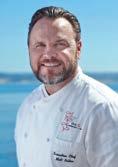
SUR is the latest restaurant for Bill and Teresa Lee, who over the years have created local favorites like Bahama Billy’s and Bixby Bistro at The Barnyard. Executive chef Herman Hernandez gets rave reviews for an exciting and eclectic menu. Favorites include his famous Southern fried chicken and waffles, fi sherman’s bouillabaisse, filet mignon, burgers and a variety of vegetarian dishes. SUR has a full bar and holds two happy hours nightly, from 3–6pm and 8–9pm, plus happy hour all night every Tuesday. A wide selection of local wines is available. SUR has a special doggie menu for canine patrons! Open Tu–Su 11:30am–9pm, all-day menu served continuously.

Earthbound Farm’s Farm Stand Organic Kitchen

7250 Carmel Valley Road 831.625.6219 • earthboundfarm.com
At its newly renovated Carmel Valley Farm Stand, Earthbound Farm’s 100% certified organic kitchen delights with housemade soups, sandwiches, a newly expanded salad bar, baked goods and fresh juices and smoothies. Food is available to be enjoyed on our beautiful grounds or for takeaway. Experience picturesque Carmel Valley as you stroll through Earthbound’s organic gardens and learn about its pioneering local heritage and commitment to organic integrity. And as always, pick up some fresh, local organic fruits and veggies. Visit website or check out Facebook for hours, special events and classes!
Edgar’s 8000 Valley Greens Drive 831.620.8910 • quaillodge.com
Taste the fresh ingredients harvested from local farms and fi sheries hand-selected by Edgar’s executive chef Brian Parks and exquisitely prepared by the culinary team. Edgar’s features casual elegance with its indoor and outdoor fi reside dining against the backdrop of the golf course and Santa Lucia Mountains. It offers authentic California cuisine with hints of alternate influences, with modern takes on familiar classics using time-tested techniques. Voted “Best Restaurant on a Golf Course” by locals. Visit quaillodge.com/edgars for most up-to-date hours.
Folktale Winery & Vineyards 8940 Carmel Valley Road 831.293.7500 • folktalewinery.com
Folktale Winery is renowned for its wines, but great food is also on the menu there. The winery off ers small bites that are perfectly paired to its vintages, from the artisan cheese and charcuterie boards to Folktale’s deviled eggs with Baker’s bacon or Imperial caviar, and Niman Ranch meatballs. Salads and vegetarian options are also available, as is a selection of savory fl atbreads. They’re just the thing to enjoy while taking in the idyllic beauty of the setting and enjoying a wine fl ight of Folktale’s fi nest. Tours and special wine and food pairings are also available by reservation. Winery open Th noon–8pm, F–Sa 11am–9pm, 11am–8pm, kitchen open noon–8pm.
From Scratch Restaurant 3626 The Barnyard 831.625.2448 • fromscratchrestaurant.com
When a restaurant is called From Scratch, customers expect a meal prepared with the freshest ingredients and cooked to perfection. Th at’s exactly what you get when you dine at this charming family-owned spot. Breakfast is served all day, featuring hometown favorites such as eggs Benedict, made-to-order omelets, French toast made with homemade cinnamon bread and huevos rancheros. A variety of lunch specials is available, including soups, salads and sandwiches. A pet-friendly patio wel-
comes those who come in with furry friends. Open daily 8am–2:30pm. Lunch served starting at 11am.


Mission Street between Fourth and Fifth avenues 831.238.9608 • ilgrillocarmel.com
A more casual yet equally outstanding sister to Carmel’s La Balena, Il Grillo is staking out its own creative culinary personality with the addition of longtime local chef Brandon Miller. Homemade desserts are by Emily Garcia. Both Miller and Garcia share a wealth of local food knowledge and traditions shine through their cooking. Dinner menus are driven by local and sustainably raised ingredients, with beautiful and delicious results. Garden seating available. Open M–Sa 4–9pm.


Junipero Street between Fifth and Sixth avenues 831.250.6295 • labalenacarmel.com
Winner of EMB’s 2014 Local Heroes award for Best Chef/Best Restaurant, La Balena has a seasonal menu that changes daily but always expresses an inventive take on the rustic food of a Tuscan trattoria. The outstanding culinary team sources ingredients from local organic farms and prepares the restaurant’s pastas and slow-cooked meats from scratch daily. Owners Anna and Emanuele Bartolini have created an excellent Italian wine list and a warm, inviting atmosphere, complete with back garden seating. Open Tu-Su 11:30am3:30pm, 5-10pm.
Lafayette Bakery & Café
3659 The Barnyard, Suite E-22 831.915.6286
Whether it’s a rustic loaf of bread or a delectable French pastry, you’ll find what you’re looking for at awardwinning Lafayette Bakery & Café, a favorite stop for both locals and visitors to The Barnyard. Master baker Jean-Bernard Vial and the rest of the Vial family bring their French heritage to their authentic artisan breads and handcrafted pastries such as custard brioche and almond croissants. Coffee, baguette sandwiches and salads are also served with a smile. Open M–Sa 7am–6pm, Su 7am–4pm.
Lugano Swiss Bistro 3670 The Barnyard 831.626.3779 • swissbistro.com
With authentic Swiss, French and German cuisine, and Old Country decor, it’s no wonder that Lugano is described as “an escape to Switzerland.” Chef André Lengacher brings the unique and robust fl avors of his native country to a menu that includes schnitzel, pasta, Monterey Bay sand dabs and more. Or just indulge in Lugano’s famous fondues. A special menu is available for four-legged diners as well as a pet-friendly patio. Live music every Thursday night. Open 11:30am–9pm; closed Mondays.
The Noodle Palace

3678 The Barnyard, Suite E-31 831.622.7777 • thenoodlepalace.com
In search of the perfect pho? The Noodle Palace, owned by the Tran/Nguyen family, off ers upscale Vietnamese and Asian cuisine with pho as the centerpiece, but also features a variety of other delicious selections that includes dim sum, bahn mi sandwiches, rice noodle soups and vermicelli bowls, and combination plates. Many vegetarian plates are also available. The Noodle Palace also offers catering for events and parties. Open daily except Tuesdays, 11am–8pm.
Rise + Roam
Mission Street and Seventh Avenue 831.574.2900

Another unique restaurant by the Folktale team made its debut in January, bringing a whole new concept to the Monterey Peninsula. The casual eatery featuring a pizzeria and a bakery pairs the talents of executive chef Aaron Rayor and pastry chef Petra Jung, focusing on Roman-style pizza that is served by the meter on wooden paddles. Also offered are handmade pastas, unique salads and, for lunch, soups and sandwiches, as well as delectable cheesecakes, churros and other sweet treats. Bakery open 6:30am–10pm daily. Restaurant open for lunch 11:30am–4pm and dinner 4–10pm daily.
Robata Grill & Sake Bar
3658 The Barnyard, Lower Level 831.624.2643 • robata-barnyard.com
Robata Grill & Sake Bar in The Barnyard has been a locals’ favorite for more than three decades, providing traditional Japanese cuisine and a sushi bar. The perfect place for any occasion, the restaurant features a full bar and wine list as well as a good selection of sake and Japanese beer. Robata welcomes private parties and off ers catering as well. Open M–Sa, lunch 11:30am–1:30pm, dinner at 5pm.
Seventh & Dolores Steakhouse (7D)

Seventh and Dolores 831.293.7600 • 7Dsteakhouse.com
The heart of this restaurant is a classic steakhouse, but with the energy and influences of coastal California and beyond. The restaurant, owned and run by the team behind Folktale Winery, is both a favorite neighborhood spot as well as a place to celebrate special occasions. Chefs choose all-natural meats from Niman Ranch that include 28-day, dry-aged beef, all humanely and sustainably raised, in addition to fresh local seafood and housemade desserts. Open for lunch 11:30am–3pm and dinner 5–10pm daily as well as brunch Sa–Su 11:30am–3pm.
Waypoint Bar & Kitchen


8205 Valley Greens Drive 831.620.8910 • quaillodge.com

Inspired by The Peninsula Hotels’ Signature Motoring Events hosted annually at the Quail Lodge & Golf Club, Waypoint provides an authentic yet casual atmosphere featuring real motorcycles provided by the Moto Talbott Collection, motorsports-themed artwork by renowned local artist Molly McCall, and billiards and darts. Waypoint offers a café-style breakfast with a selection of craft coffee and teas, complemented by breakfast favorites that include fruit and yogurt, bakery items, eggs any style, breakfast sandwiches, buttermilk pancakes and an array of delectable sides such as applewood smoked bacon, chicken apple sausage, potato pancakes and more. In the evening there is casual, yet elevated fun fare complemented by a selection of craft beer, whiskey, wine and cocktails. Visit quaillodge.com/dining for the most upto-date hours.
Jerome’s Carmel Valley Market

2 Chambers Lane 831.659.2472 • jeromescarmelvalleymarket.com
Already known for its specialty groceries, meats and fresh local produce, this beloved market is now serving classically French-trained chef Jerome Viel’s delicious hot prepared foods, sandwiches and mostly organic salad bar for eating at comfortable outdoor seating or takeaway. The off erings start with breakfast burritos, croissants and other French pastries in the morning, followed by favorites such as coq au vin, spaghetti carbonara and

chicken enchiladas for lunch. On Friday afternoon, the big paella pan appears just in time to take some home for dinner. Open M–Sa 7am–7pm, Su 7am–6pm.
Lucia Restaurant & Bar

Bernardus Lodge & Spa • 415 W. Carmel Valley Road 831.658.3400 • bernarduslodge.com
Indulge in artisanal California country cuisine, awardwinning wines and an expansive heated outdoor terrace with the fi nest restaurant view in Carmel Valley. Named for the Santa Lucia mountain range and wine appellation that beckons to the south, renowned chef Cal Stamenov serves both his signature tasting menu and dishes à la carte. Wine list is equally notable. A private chef’s table and wine cellar are also available. Enjoy live music Monday, Tuesday, Friday and Saturday evenings and at Saturday and Sunday brunch. Open daily 7am–10pm.
Sangria


5 Del Fino Place 831.298.7281 • sangriawinetapasbar.com

Th is unique wine and tapas bar features a warm and inviting atmosphere where customers can relax. Th e emphasis on local wines and Spanish and Latin American tapas and small plates is the inspiration of owners Robert and Colleen Mann. Open Wed-Sun 12-8pm. Happy Hour Wed-Fri 4-6pm. Reserve the beautiful secret garden for parties and events.
Trailside Café and Beer Garden
3 Del Fino Place 831.298.7453 • trailsidecafecv.com

Here, visitors will fi nd the best local beer selection on the Central Coast, with 15 draft beers and one cider in rotation in addition to more than 50 bottled brews. Open for breakfast, lunch and dinner, the café has an extensive menu including burgers, sandwiches, salads and evening entrées such as grilled salmon, chicken satay and stuffed portabellos. Live music in the beer garden on weekends, locals’ specials and a pet-friendly patio make it an area favorite. Check the website for special events and menu additions. Open daily 8am–9pm.


Whale City Bakery 490 Highway 1 831.423.9009 • whalecitybakery.com Davenport’s artistic charm and oceanside location make it hard not to slow when you pass through on Highway 1. Those in the know always stop at the historic Whale City Bakery. The bakery tempts with housemade breads, pastries, muffi ns and pies—and that’s only the beginning! Whale City also offers a full restaurant that serves up comfort classics and other hearty dishes. The bar and live music every Thursday attract a loyal local following. Open daily 6:30am–8pm.



The Cremer House 6256 Highway 9 831.335.3976 • cremerhouse.com Housed in the oldest building in Felton, The Cremer House showcases progressive, made-from-scratch food and drinks with a nod to its historic mountain surroundings. Th is alehouse has fi lled a niche in the San Lorenzo Valley, bringing to this restored and revered property craft beer, cider and wine on tap, and combining it with organic and sustainable fare made with local ingredients. Open Tu–Th, Su 11:30am–9pm, F–Sa 11:30am–9:30pm.
Wild Roots Market
6240 Highway 9 • 831.335.7322 (Felton)
13159 Highway 9 • 831.338.7211 (Boulder Creek) wildrootsmarket.com
Wild Roots’ 100% organic produce, natural groceries, organic meats and FishWise-certified seafood all go into the prepared foods offered by the store’s full-service deli, salad and soup bar and juice bar. Open daily 9am–9pm. Enjoy on the patio or take home.





The Cork & Plough

200 Broadway Street 831.386.9491 • thecorkandplough.com
It’s no wonder that The Cork & Plough is a favorite stop for travelers on the Hwy. 101 corridor and Salinas Valley locals alike. The downtown location is convenient; the hip, airy room and its massive tinted concrete bar are inviting; and the terrific food is prepared by chef/proprietor Travis Childers and his team with super-fresh ingredients directly from local farms. If you’re not the designated driver, don’t miss the cocktails crafted with housemade infusions by head bartender Rob Marshall or the wines and beers carefully curated by co-proprietor Anna Childers. Open Su–Th 11am–9pm, F–Sa 11am–10pm.

The Club Room
2 Portola Plaza 831.649.2698 • portolahotel.com/dining/the-club-room
The Club Room inside the Portola Hotel & Spa offers a fresh, seasonal, breakfast buffet featuring made-to-order omelets, assorted housemade pastries and muffi ns, sliced cold cuts, fi ne artisan cheeses, bottomless mimosas and much more all for $19.95. Dine in the cozy fi reside dining room, or breathe in the fresh coastal air on the outdoor, pet-friendly, heated patio. Open for breakfast daily 6–11am.
the C restaurant + bar


InterContinental The Clement Monterey 750 Cannery Row 831.375.4500 • ictheclementmonterey.com

Step into the C restaurant + bar, and the bustle of Cannery Row will seem like a world away. Elegant yet relaxed, the C offers stunning ocean views from its floorto-ceiling windows and oceanside deck. Executive chef Matt Bolton provides equally gorgeous food, imaginatively prepared from sustainably sourced seafood, meats and produce. Creative cocktails include international specialties, as well as sparkling wine fl ights from around the world. Open daily 6:30am–10pm, Happy Hour 4–7pm Su–Th. Live Music F–Su noon–3pm, Th–Sa 6–9pm.
Jacks Monterey 2 Portola Plaza 831.649.7830 • jacksatportola.com
Jacks Monterey offers “California Cultural Cuisine” and seats guests beneath the trees in a glass-topped atrium where they can enjoy the sun by day and the stars at night. Reflecting the palette of the Monterey Peninsula, the new space is decorated with ocean blues, driftwood browns and the greens of coastal flora. Chef Danny Abbruzzese’s new seasonal menu provides a melting pot of fl avor profi les from the entire California coastline and other exotic locales. Open for lunch daily 11:30am–4pm, dinner daily 4–11pm, Sunday brunch with live music 11:30am–3pm.
334 D INGALLS STREET WEST SIDE SANTA CRUZ WESTENDTAP.COM
1501 41ST AVENUE CAPITOLA EASTENDPUB.COM
Pacific Rolls & Bowls
475 Alvarado Street
831.583.8433 • pacificbowlsandrolls.com
The eatery that led the revival of Alvarado Street is now getting its own makeover. The Poke Lab is now Pacific Bowls & Rolls, with a new look and new menus. PBR continues to offer signature poke bowls as well as salads, nori rolls and bahn mi sandwiches. Pick your protein from among Kalbi barbecued beef, shoyu chicken, pork belly, ginger tofu, ahi tuna and more, and then select toppings and extras. Online ordering available. Check the Facebook page for updates.
Peter B’s Brewpub

2 Portola Plaza
831.649.2699 • peterbsbrewpub.com

Experience Monterey’s original craft brewery, Peter B’s Brewpub, located behind the Portola Hotel & Spa. Enjoy great food and award-winning handcrafted beers. Watch your favorite game on one of 18 HDTVs or enjoy the pet-friendly heated patio with fi re pits. Peter B’s is open daily with nightly Happy Hour from 4–6:30pm, as well as late night happy hour Su–Th 9:30–10:30pm. Open Su 11am–11pm, M–Th 4–11pm, F 4pm–12am, Sa 11am–12am. Sunday breakfast and football 9:30–11am (Sept.–Dec.).
Schooners Coastal Kitchen & Bar
Monterey Plaza Hotel & Spa 400 Cannery Row 831.372.2628 • schoonersmonterey.com
Sit out on the newly remodeled oceanside patio if you can, but it’s still considered seaside dining if you are seated inside the dining room, where polished wood, bay windows and seafaring décor seem like the interior of a sailing ship. Schooners Coastal Kitchen & Bar serves sustainable seafood and prime steaks. Th e restaurant takes a creative Californian approach to soups, fresh salads, sandwiches and wood-fi red fl atbreads, paired with a diverse wine list featuring local favorites. Open daily 6:30am–11pm.
TusCA Ristorante
Hyatt Regency Monterey Hotel & Spa 1 Old Golf Course Road 831.657.6675 • monterey.hyatt.com
Blending the beauty and bounty of Tuscany and California, TusCA executive chef Dan Elinan offers seasonally inspired menus made with fresh locally sourced produce. Try the Castroville artichoke fritters or entrées such as shiitake and fava risotto or cedar plank salmon with local bok choy rabe and Carmel Honey Co. miso. Open daily for breakfast and lunch 6:30am–1:30pm, dinner 6–9pm Tu–Sa.
Wild Plum Café, Bistro & Bakery


731 Munras Avenue
831.646.3109 • thewildplumcafe.com
Located in Old Monterey in a vibrant and diverse neighborhood, Wild Plum draws people from all walks of life with sustainable bistro fare that uses organic, locally sourced produce, hormone-free Diestel turkeys roasted on site, grass-fed beef and house-baked bread and pastries. Breakfasts include scrambles, omelets, and breakfast tacos and burritos, and for lunch, choose among soups, salads, sandwiches and paninis, burgers and house specialties. Food to go and catering available. Open Su–M 7am–3:30pm, Tu closed, W–Sa 7am–5:30pm.
Happy Girl Kitchen Co.

173 Central Avenue 831.373.4475 • happygirlkitchen.com

The menu changes daily at Happy Girl’s airy and bright Pacific Grove café, but the food is always delicious, organic and reasonably priced. The sandwich of the day is $6.50, and a bowl of the soup of the day is $6. To drink, you’ll fi nd kombucha on tap and freshly roasted Verve coff ee brewed to perfection. Homemade baked goods include a daily scone, cookies and turnovers. Check the website for information on seasonal workshops. Open daily 7:30am–3pm, coffee and tea served until 5pm.
Jeninni Kitchen + Wine Bar


542 Lighthouse Avenue 831.920.2662 • jeninni.com
Inspired by flavors of the Mediterranean, Jeninni Kitchen + Wine Bar’s rich and decadent cuisine takes you on a journey from Morocco and Spain to the Levant, birthplace of owner and sommelier, Thamin Saleh. Don’t miss the charred octopus, lamb burger with signature eggplant fries and occasional paella nights and other special events. Open every day except Wednesday, 5pm until close. Happy Hour—”sips and snacks”—4–6pm.
Passionfi sh

701 Lighthouse Avenue 831.655.3311 • passionfi sh.net


If you’re looking for a restaurant with playful, spectacular food and a scrupulous commitment to sustainability, this green-certified restaurant is hard to rival. The elegant dining room is celebratory yet relaxed, and the award-winning wine list features many sustainable names and is priced at retail. Chef Ted Walter’s menu is ever changing with the seasons, but always includes delicious organic local produce, inventive slow-cooked meats and an array of sustainable seafood choices. Open daily 5pm.
Wild Fish



545 Lighthouse Avenue 831.373.8523 • wild-fi sh.com

Owners Liz and Kelvin Jacobs welcome you to feast on the bounty of nearby waters and farms at their 100% local and organic seafood house, enjoying exquisite dishes like crispy sablefi sh and swordfi sh au poivre, accompanied by succulent native seaweeds. Fresh oysters, innovative salads, house-baked bread and sides like fingerling potatoes with poppyseed crème fraîche or baby carrots with wild nettle pesto, make this a dining destination. Did we mention English sticky toff ee pudding? Or the live jazz on Friday nights? Open for lunch F–Tu 11:30am–2:30pm, dinner Su–Th 5–9pm, F–Sa, 5–9:30pm.
The Bench
The Lodge at Pebble Beach, 1700 17-Mile Drive 866.543.9318 • pebblebeach.com/dining
Overlooking the 18th hole at Pebble Beach Golf Links, Th e Bench at Th e Lodge at Pebble Beach delivers an eclectic menu inspired by international styles and methods, which uses the innovative technique of wood roasting and open-fl ame cooking. You can also enjoy one-ofa-kind craft cocktails, as well as an array of draft beers and wines by the glass. Open daily 11am–10pm.
The Lodge at Pebble Beach, 1700 17-Mile Drive 866.543.9318 • pebblebeach.com/dining
Overlooking the fi rst tee of Pebble Beach Golf Links, Gallery Cafe offers a wide selection of breakfast choices, from light smoothies to omelets and pancakes. For a casual lunch, try the excellent burgers or choose from a delicious selection of artisan sandwiches, plus the best milkshakes this side of the 1950s. Open daily 6am–2pm.

The Inn at Spanish Bay, 2700 17-Mile Drive 866.543.9318 • pebblebeach.com/dining
At Pèppoli, the scents of Italian herbs and spices fi ll the air, and the décor transports you to a cozy Tuscan villa. The menu is big and bold, ripe with traditional pastas, seafood and meats. The extraordinary wine list is matched by equally impressive dishes, including delicious desserts, all with stunning views of Spanish Bay. Open daily 5:30–10pm.
The Inn at Spanish Bay, 2700 17-Mile Drive 866.543.9318 • pebblebeach.com/dining
It’s all about big fl avors and the gorgeous ocean view at Roy’s at Pebble Beach. Fresh seafood is front and center, where sushi, sashimi and blackened rare Ahi tuna are prepared to perfection, but many exciting meat dishes and island salads are also featured on the extensive Hawaiian-fusion menu. Add a dynamic wine list, exceptional desserts and an energetic environment, and you have one impressive dining experience, all overlooking Spanish Bay. Open daily for breakfast 6:30–11am, lunch 11:30am–5pm, dinner 5:30–10pm.

The Inn at Spanish Bay, 2700 17-Mile Drive 866.543.9318 • pebblebeach.com/dining
A combined wine lounge and retail shop, Stave Wine Cellar is a luxurious yet casual space that is ideal for special wine dinners or gathering with friends and colleagues. You can pair varietals by the glass with a menu of cheese and charcuterie plates. In addition to nearly 30 wines and eight craft beers by the glass, Stave has more than 200 wines for purchase by the bottle, including a wide selection of coveted bottles. A knowledgeable staff, including certified sommeliers are on-hand. Open Tu–Sa 2–10pm, Su–M 2–7pm.

The Inn at Spanish Bay 2700 17-Mile Drive 866.543.9318 • pebblebeach.com/dining
Open for breakfast, lunch and dinner, Sticks is the perfect place for seasonally diverse California cuisine in a lively sports bar atmosphere. Savor a tasty meal, a cold draft beer, specialty cocktail or one of the many appetizers, while enjoying sports on fl at-screen TVs. Outside on the patio, enjoy seating next to a fi re pit while soaking up gorgeous views of The Links at Spanish Bay and the Pacific Ocean along with nightly bagpiper music. Ask about specials and new menu additions. Open daily 6am–9pm.
The Lodge at Pebble Beach, 1700 17-Mile Drive 866.543.9318 • pebblebeach.com/dining
Stillwater Bar & Grill prides itself in offering the freshest and most flavorful in sustainable seafood and organic produce. Whether it’s breakfast, lunch or dinner—or Stillwater’s famous Sunday Brunch—the menus are sure to delight. Shellfi sh lovers will marvel at the bountiful seafood tank, while those who prefer turf to surf can choose from a variety of meaty options. Each of these delectable feasts is enhanced by fantastic views of Carmel
Bay and the 18th hole of Pebble Beach Golf Links. Open daily 7am–10pm.
The Lodge at Pebble Beach, 1700 17-Mile Drive 866.543.9318 • pebblebeach.com/dining
The Tap Room is more than a legendary 19th hole with an outstanding selection of draft and bottled beers, vintage wines and top quality spirits. It’s also a world-class steakhouse serving up hearty all-American fare, from burgers to prime rib to fi let mignon. Renowned for its extensive collection of prized golf memorabilia, The Tap Room is a comfortable and inviting place for watching televised sporting events or recounting your successes on the courses of Pebble Beach. Open daily 11am–12am.
Vertigo Coff ee Roasters 81 Fourth Street 831.623.9533 • vertigocoffee.com
Artisanal coff ee roasted on site as well as fresh pastries baked in-house, brunch items, local craft beers plus wood-fi red pizzas have made Vertigo a locals’ favorite as well as a great fi nd for visitors en route to the San Juan Mission, Pinnacles or other area attractions. Open M–W 7am–3pm, Th –Su 7am–9pm.
Bistro One Twelve


1060 River Street, Suite 112 831.854.7458 • bistro112sc.com


Driven by the farm-to-table philosophy of Frenchtrained chef Shannon Madison, Bistro One Twelve is the dining destination and gathering spot for the Santa Cruz Tannery Arts Center. Its “Decidedly Local, Aggressively Seasonal” menu is plant forward, with food layered to accommodate various dietary options. Breakfast, lunch and dinner with Taco Tuesday and Trivia Thursday; local craft beers and carefully curated wines available. Open M–W 8am–6:30pm, Th –F 8am–9pm, Sa 10am–9pm, Su 10am–2pm
Breakfast at Burn Westside and Live Oak farmers’ markets burnhotsauce.com
You’ve loved Burn as a hot sauce—now its creators have branched out into breakfast. Chef Amanda Heyse is serving up to-go fare every Saturday 9am–1pm at the Westside farmers’ market and Sundays 9am–1pm at the Live Oak market. She dishes up hot cakes, griddled banana bread, eggs over arugula and cherry tomatoes, fried eggs and crispy potatoes, breakfast burritos and other morning delights. Menus are ever changing and always organic.
Charlie Hong Kong
1141 Soquel Avenue 831.426.5664 • charliehongkong.com
Charlie Hong Kong has been providing the Santa Cruz community with healthy, sustainable, aff ordable and high-quality food since 1998. The colorful, casual eatery’s delicious fusion of Southeast Asian influences and the Central Coast’s local organic produce has made it an inclusive, family-friendly, neighborhood favorite. Its slogan is “love your body, eat organic,” and its cuisine is proof that fast food can be good for you. All signature dishes are vegan with the option to add meat or fi sh. Gluten-free modifications available. Dog friendly. Open daily 11am–11pm.

Chocolate

1522 Pacific Avenue 831.427.9900 • chocolatesantacruz.com



As its name suggests, there are all kinds of decadent chocolate desserts at Chocolate the restaurant, but this farm-to-fork local favorite is much more than a dessert spot. Everything is prepared simply and with local and organic ingredients whenever possible. From sandwiches, salads and soups at lunch to dinners that include chicken mole, barbecued roast pork and polenta plate, it’s all about celebrating the best of the Central Coast. Cocktails made with Santa Cruz-based Venus Spirits, a hot chocolate menu and local wines and beers can be found here as well. A party room for your special celebration is available, with seating and menu options to suit the occasion. Open Su–Th 11:30am–10pm, F–Sa 11:30am–1pm.
The Crow’s Nest 2218 E. Cliff Drive 831.476.4560 • crowsnest-santacruz.com
A perfect spot to enjoy lunch or catch a sunset over the harbor, the nautical-themed Crow’s Nest is a Santa Cruz institution that never goes out of style. There’s always something happening, from free seasonal Thursday night beach parties to comedy nights and happy hours. Famous for its salad bar and house-smoked salmon, The Crow’s Nest is a member of Seafood Watch and is a certified green business. Open daily for breakfast 7:30am–11:30am; lunch M–F 11:30am–2:30pm and Sa–Su 11:30am–3pm; dinner M–F 5pm, Sa–Su 4:30pm.
Laílí 101B Cooper Street 831.423.4545 • lailirestaurant.com
Exotic fl avors of the Silk Road are served in a stylish dining room decorated in eggplant and pistachio colors and on a hidden candlelit patio. Locals rave about Laílí’s homemade naan served warm from the oven with a selection of Mediterranean dips. There is a wide variety of deliciously spiced vegetable dishes and all meats are hormone free and free range. Open for lunch Tu–Su 11:30am–2:30pm, dinner 5pm–close.
La Posta 538 Seabright Avenue 831.457.2782 • lapostarestaurant.com
A cozy neighborhood bistro not far from the Santa Cruz yacht harbor, La Posta chef Dante Cecchini prepares traditional rustic Italian cuisine using local ingredients. The emphasis is on simple, seasonal selections, with the balance of the menu reflecting whatever produce is freshest right now. A sister restaurant of Soif Restaurant and Wine Bar, La Posta also offers a great selection of wines. Open Tu–Th 5–9pm, F–Sa 5–9:30pm, Su 5–8:30pm, M closed.
Pearl of the Ocean 736 Water Street 831.457.2350 • m.mainstreethub.com/pearloftheocean Award-winning chef/owner Ayoma Wilen goes beyond the expected traditional spice-infused dishes of Sri Lanka, creating locally inspired daily specials using fresh, organic produce from farmers’ market produce and sustainably harvested seafood. Customer favorites include butternut squash curry, crab curry and wild salmon curry. To round out the fl avor experience, there is a dizzying array of sides, like coconut leek sambal and kale mallam. The warm colors, altars and blessings that decorate the space help guests get a sense of Sri Lanka’s world-class hospitality, culture and beauty. Open for lunch daily 11am–2:30pm; dinner Su–Th 5–9pm and F–Sa 5–9:30pm.
The Penny Ice Creamery

913 Cedar Street 831.204.2523 • thepennyicecreamery.com




Lines out the front door of its converted Spanish bungalow are evidence of Penny’s popularity. All ice cream, including bases, is made from scratch on the premises using local organic ingredients when possible. Dozens of exotic fl avors rotate seasonally, but two favorites are chocolate caramel sea salt and strawberry pink peppercorn. Open daily noon–11pm. See also The Penny under Capitola.
The Picnic Basket 125 Beach Street 831.427.9946 • thepicnicbasketsc.com
Across the street from the main beach, owners of The Penny Ice Creamery have opened an alternative to boardwalk fast food. Sandwiches, organic salads, coffee and beer, all from local food artisans, and of course Penny’s popular ice cream, are all on offer to eat in or outside with your feet in the sand. Open daily 7am–4pm. Expanded hours some weekends and holidays. Expanded hours during summer.
Snap Taco 1108 Pacific Avenue 831.824-6100 • eatsnaptaco.com
Th is festive taco spot draws its inspiration from food traditions around the world, with imaginative tacos created using the best fresh, local and sustainable ingredients. Great for a quick bite or gathering with friends and family. Choose from snacks, tacos, bowls and sandwiches on the menu, as well as draft beers, the Snap Rita, and specialty cocktails. Open Su–Th 11:30am–9:30pm, F–Sa 11:30am–10:30pm.
Soif Restaurant and Wine Bar

105 Walnut Avenue 831.423.2020 • soifwine.com
Inspired by the off erings from local farmers and provisioners, executive chef Tom McNary’s cuisine shows California fl air with super, seasonal dishes, all paired with local and exotic wines (and a great burger!). A cozy, new bar offers cocktails in addition to the best wine selection in town. The bottle shop next door provides a world-class selection of wines and a welcoming seating area for sipping and tasting. Raw oysters and live jazz every Monday. Open Su–Th 5–9pm, F–Sa 5–10pm. Wine bar opens noon Tu–Sa, 5pm Su–M.
West End Tap & Kitchen

334D Ingalls Street • 831.471.8115 westendtap.com
At West End, perfect for any parent who is looking for a happy hour to satisfy the whole family, adults and kids alike can’t get enough of the duck fat popcorn, fried calamari and flatbread pizzas. A diverse, season-driven menu with offerings like seared scallops with mascarpone and lemon risotto, trumpet mushrooms, Marcona almonds and tarragon-basil vinaigrette, and a long list of craft beers, ciders and wine options make West End a Westside staple. The outdoor patio is perfect for people watching amidst the bustling Swift Street Courtyard. Open Su–Th 11:30am–9:30pm, F–Sa 11:30pm–10pm.
Kitchen Table/1440 Multiversity 800 Bethany Drive 844.544.1440 • 1440.org
1440 is the number of minutes in each day, and at the new learning destination in Scotts Valley, 1440 represents the many opportunities there are to be mindful in this life we live. Th at philosophy certainly translates to the food we choose to eat, which makes the onsite Kitchen Table a wonderful canvas for showcasing the vibrant, healthful and delicious ingredients we have available locally. Chef Kenny Woods, who came here from Arizona to be part of this unique project, brings an intensive and enthusiastic culinary background to creating plant-based menus that change with every meal, every day, for the diverse, global community that gathers here. Registration for a 1440 program, personal getaway or special event is required to dine at Kitchen Table.
HOME 3101 N. Main Street 831.431.6131 • homesoquel.com
Located in charming Soquel Village, HOME serves the fi nest local seasonal produce and locally raised animals used nose to tail, hand butchered by chef Brad Briske. The style is New American bistro and the setting is warm and welcoming, with a fi replace, plants and classic furnishings. The menu changes from day to day, and season to season. Begin the meal with house-cured appetizers such as duck liver pâté and HOME’s big green olives,
then move on to inventive pasta dishes, seafood, and selections like Fogline fried chicken and dry aged strip loin. Complementing the meal are Santa Cruz area beers and ciders and Central Coast wines. Open Tu–Sa 5–9pm.
3070 Porter Street
831.226.2805 • prettygoodadvicesoquel.com
Talk about cooking from scratch—chef Matt McNamara goes the extra mile and actually grows most of the produce for his new Soquel restaurant. The Michelin-star chef decided to create a restaurant with quality, affordable food, leading him to open Pretty Good Advice earlier this year. The hyperlocal, fast-casual restaurant features sandwiches such as Aaron’s Avocado Toast, a Korean BBQ sandwich, and the E.L.T. (roasted eggplant, lettuce and tomato), creative beef and vegan burgers, and sides that range from butternut coconut soup to tahini ranch salad. Check Instagram for updates! Open daily 8am–5pm.


Gizdich Ranch
55 Peckham Road 831.722.1056 • gizdich-ranch.com
Visitors from all over love this third-generation, family-run farm business that popularized the “pik-yorself” experience just east of Watsonville’s Interlaken neighborhood. Tour the farm, pick fresh apples or berries or watch the action inside the juice-pressing barn. No one leaves hungry if they spend time at the bakery-deli that pleases with its fresh pies, shortcakes and pastries, along with hearty sandwiches and box lunches. Th is family friendly experience is also a treat for kids, who will enjoy the wide-open spaces and the homemade popsicles. Open daily 9am–5pm.












 BY MARK C. ANDERSON
BY MARK C. ANDERSON
Katie Blandin was on her way to class at the Berkeley Herbal Center to study things like herb tonics and plants that support liver function. On the commute north she was listening to John Steinbeck’s Cannery Row and thinking about a name for her new bar.
Knowing the power of place and the history of 214 Lighthouse Ave. itself, she was seeking a way to connect past and present. Soon she heard a line that clicked: “It is the hour of pearl—the interval between day and night when time stops and examines itself.”
Pearl Hour was born. It opened last fall with limited hours and menu, and quickly expanded to meet an enthusiastic response—the line for its New Year’s Eve shindig was almost a block long.
Blandin’s bar is the latest in a string of successes that includes work on organic farms, at farmers’ markets and traveling the world selling ginger ingredients for Marina-based Ginger People. From there she started Bar Cart Cocktail Co. to cater special events. Four years later she started crafting syrups and tinctures summoned from native herbs and seasonal fruit under the label Golden Bear Bitters—a perennial Good Food award winner.
There is much to recommend about Pearl Hour, like the long vintage bar, the funky pinball machine and finicky pool table. The backyard is big, with a second bar under development, a deck, a fire pit and planting beds for an eventual herb and flower garden. On top of that, a modest stage and packed house appearances for resident band The BASSment— and acts ranging from BiG SuRCuS burlesque to hard rock—have made Pearl one of the best venues for live entertainment.
But make no mistake: The featured act is the cocktail. Memorable drinks include revelations like Tea in Tassajara (with pine, California bay laurel, sage-infused scotch with honey and honeycomb bitters) and It Was All a Dream (gin, ginger, lemon, Prosecco and poppy tincture).
Each is assembled with striking presentations. The After Dark, which pays homage to the former gay bar that occupied the place for more than two decades, combines cane juice rum (rhum agricole), lemon, honey, Borba Farms passionfruit, Bordiga Bitter and Rosso aperitif, plus absinthe that’s poured into a half passionfruit and set ablaze.
For Last Call, EMB tapped into a cocktail that accesses all of Pearl Hour’s levels—the history, Blandin’s uncanny combinations, her tendency toward atypical spirits and those homeopathic finishing elements.
“The idea was to create a martini with mezcal and I wanted to accentuate the earth element flavors of one of my favorite spirits,” she says. “Flavors are like puzzle pieces—I chose modifiers that support the flavors of mezcal but don’t overpower it.” The finishing yarrow tincture does
that with peppery bitter tones, while adding anti-inflammatory and antiviral benefits. It also happens to be Blandin’s “very favorite herb.” She likes Herb Pharm brand, available at Whole Foods and Cornucopia.
Diana Cumberland worked with Blandin at Ginger People, where the staff would conjure new ginger-driven recipes every week and clever marketing ideas are written into their DNA.
“Katie has always had a love affair with food and drink,” Cumberland says. “Her creativity is amazing. She has this gift of knowing what flavors create not only beauty but an explosion of goodness to your taste buds.”
Courtesy Katie Blandin, proprietor, Pearl Hour in Monterey
11/2 ounce mezcal
1/2 ounces gin
1/4 ounce dry vermouth
1/2 ounce bergamot liqueur
3/4 milliliter yarrow tincture
Lemon peel
Grapefruit peel
Add first four ingredients to mixing glass with ice. Stir until chilled. Strain into rocks glass over large ice cube. Express oils of lemon and grapefruit peel over glass, throw out peels. Float yarrow tincture on top. Makes 1 cocktail.





















